Abstract
Four experiments examined the relationship between rate of reinforcement and resistance to change in rats' and pigeons' responses under simple and multiple schedules of reinforcement. In Experiment 1, 28 rats responded under either simple fixed-ratio, variable-ratio, fixed-interval, or variable-interval schedules; in Experiment 2, 3 pigeons responded under simple fixed-ratio schedules. Under each schedule, rate of reinforcement varied across four successive conditions. In Experiment 3, 14 rats responded under either a multiple fixed-ratio schedule or a multiple fixed-interval schedule, each with two components that differed in rate of reinforcement. In Experiment 4, 7 pigeons responded under either a multiple fixed-ratio or a multiple fixed-interval schedule, each with three components that also differed in rate of reinforcement. Under each condition of each experiment, resistance to change was studied by measuring schedule-controlled performance under conditions with prefeeding, response-independent food during the schedule or during timeouts that separated components of the multiple schedules, and by measuring behavior under extinction. There were no consistent differences between rats and pigeons. There was no direct relationship between rates of reinforcement and resistance to change when rates of reinforcement varied across successive conditions in the simple schedules. By comparison, in the multiple schedules there was a direct relationship between rates of reinforcement and resistance to change during most tests of resistance to change. The major exception was delivering response-independent food during the schedule; this disrupted responding, but there was no direct relationship between rates of reinforcement and resistance to change in simple- or multiple-schedule contexts. The data suggest that rate of reinforcement determines resistance to change in multiple schedules, but that this relationship does not hold under simple schedules.
Full text
PDF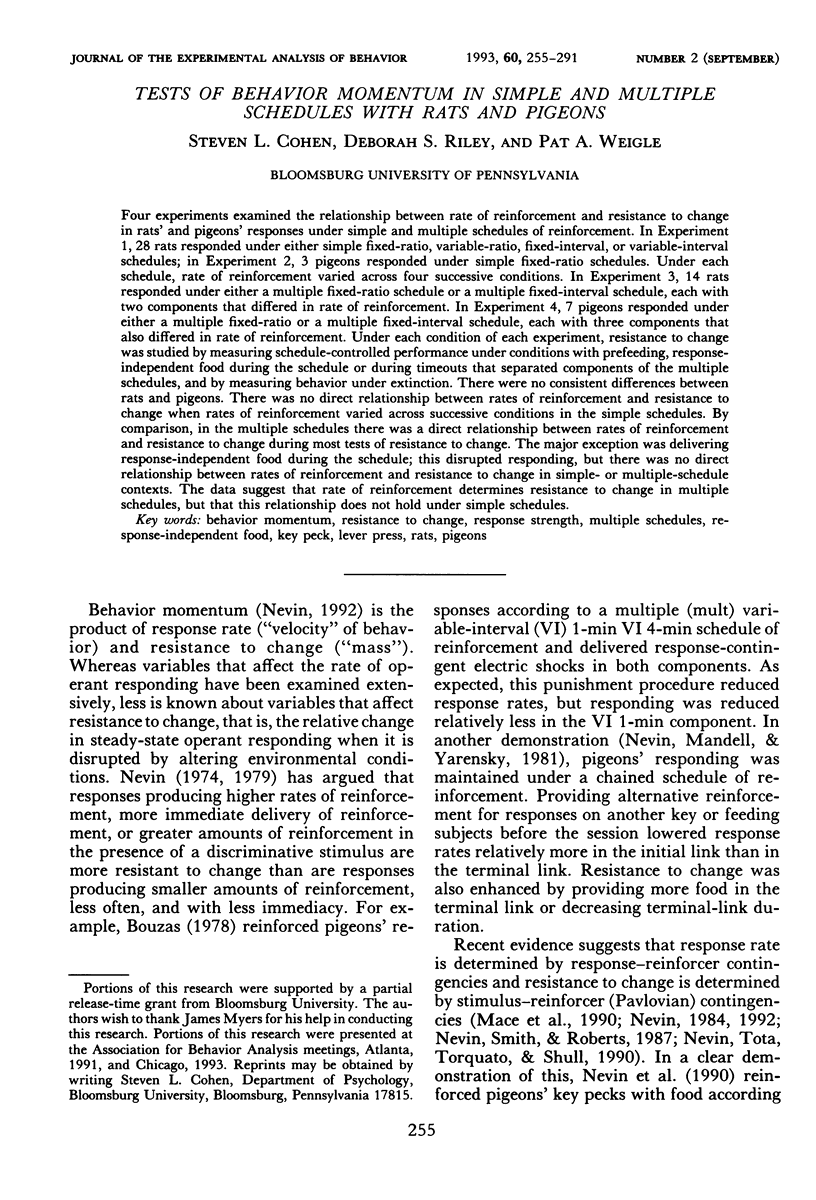
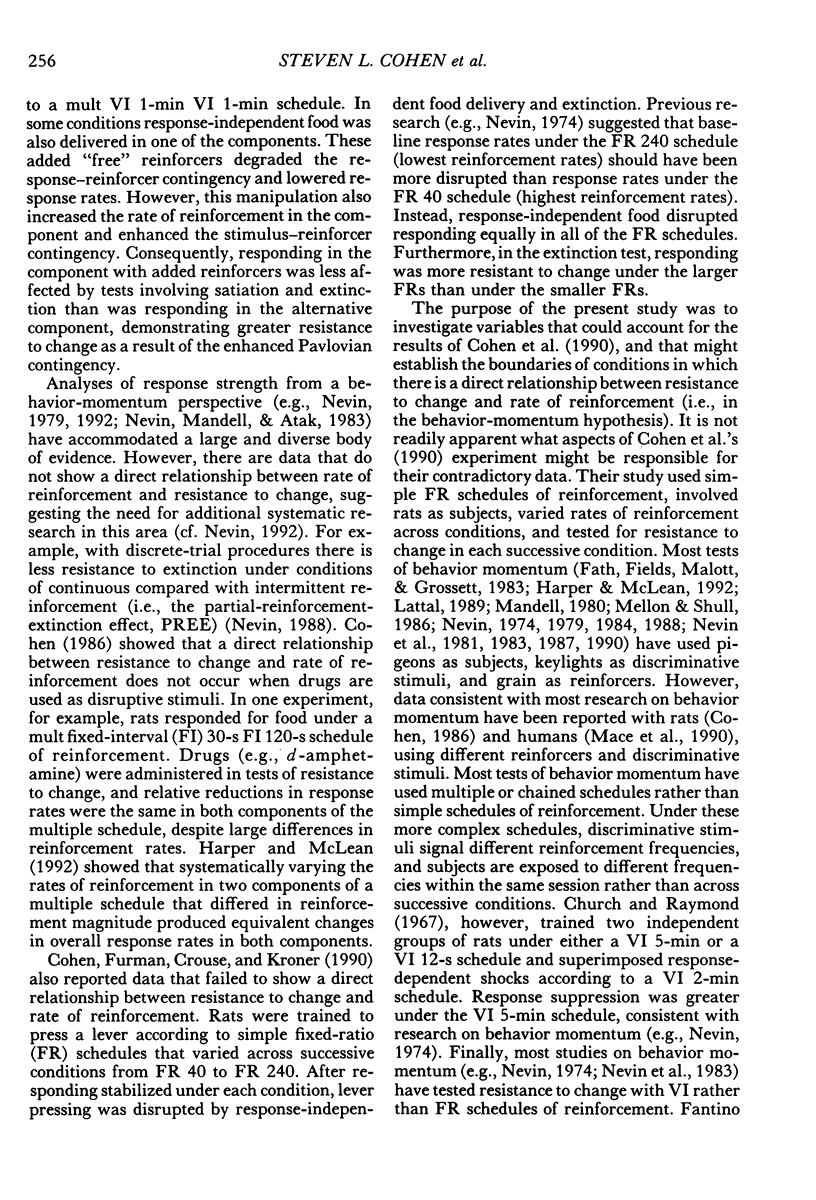
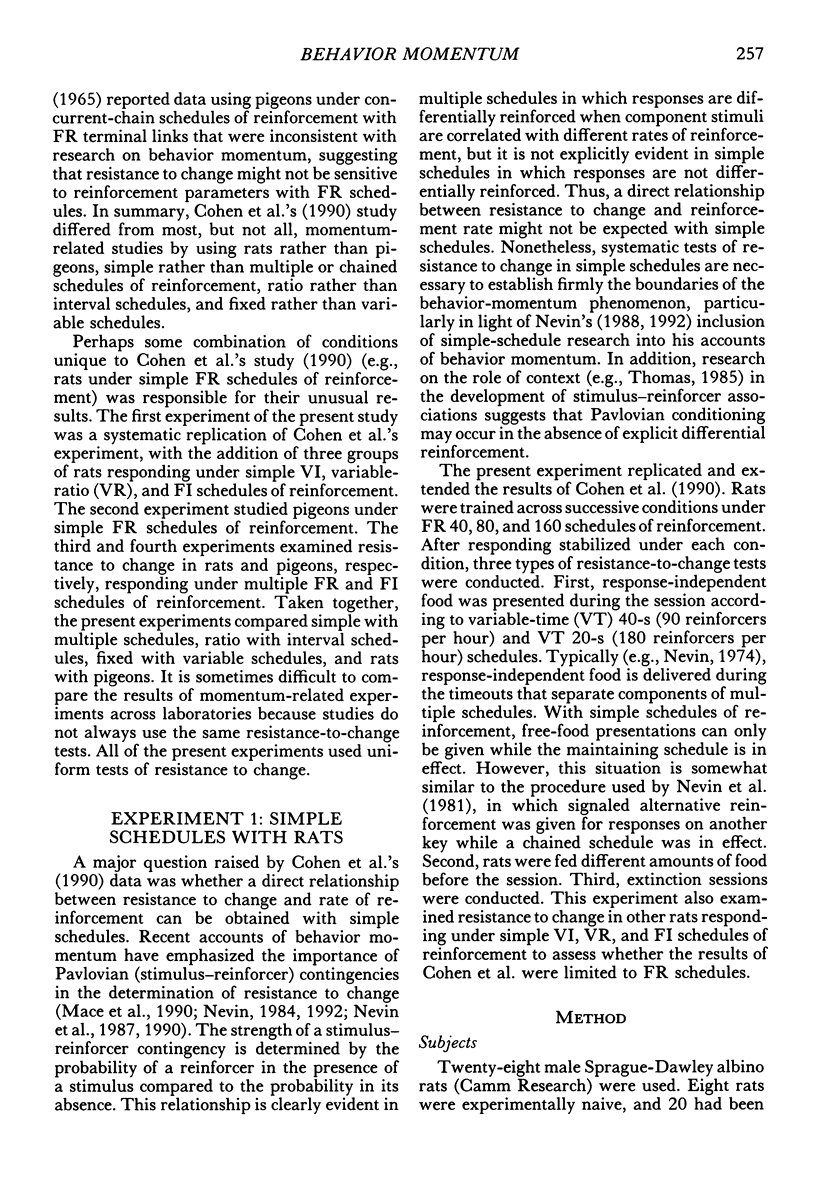
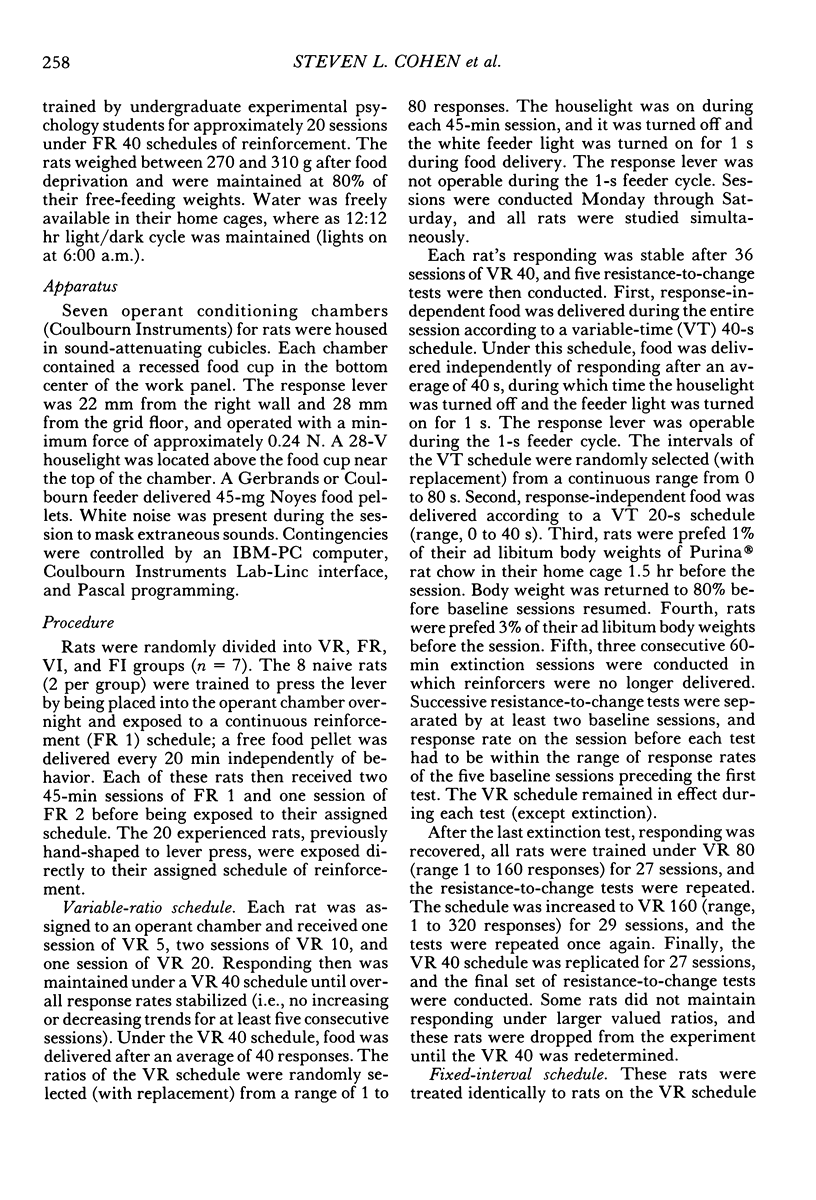
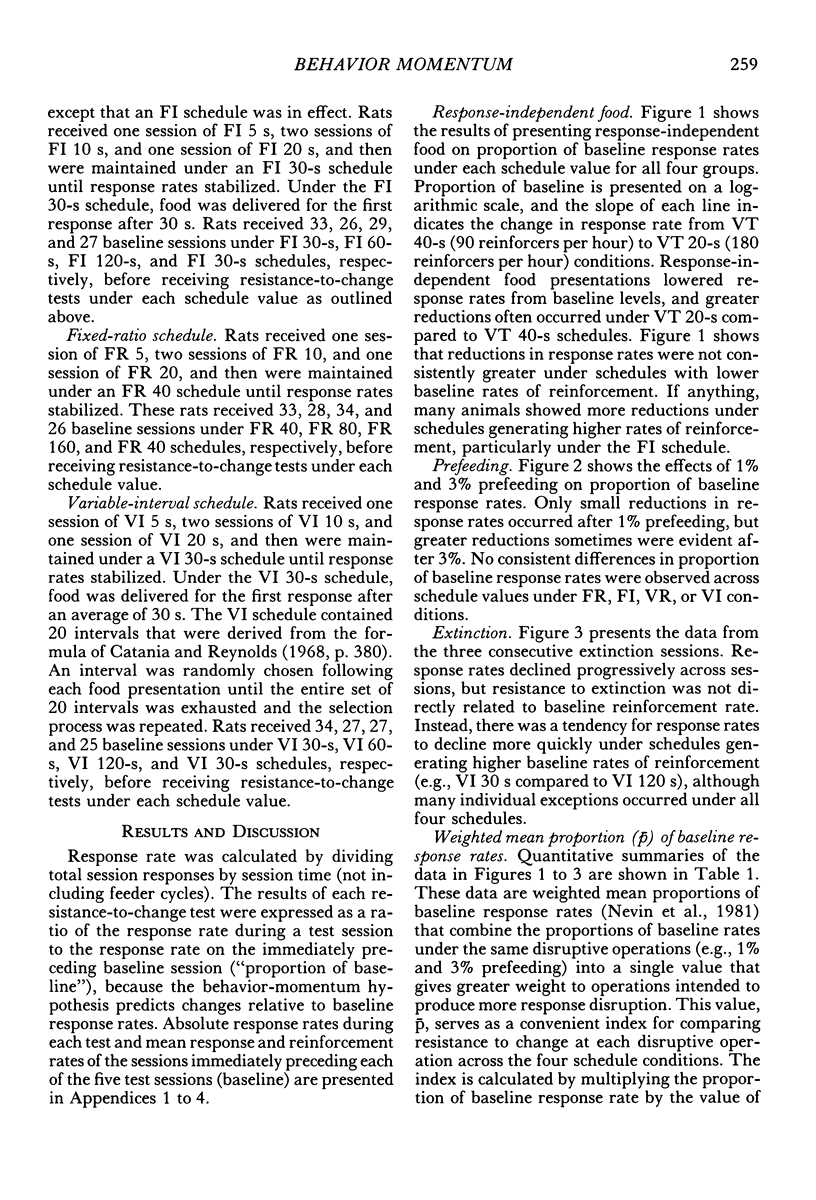
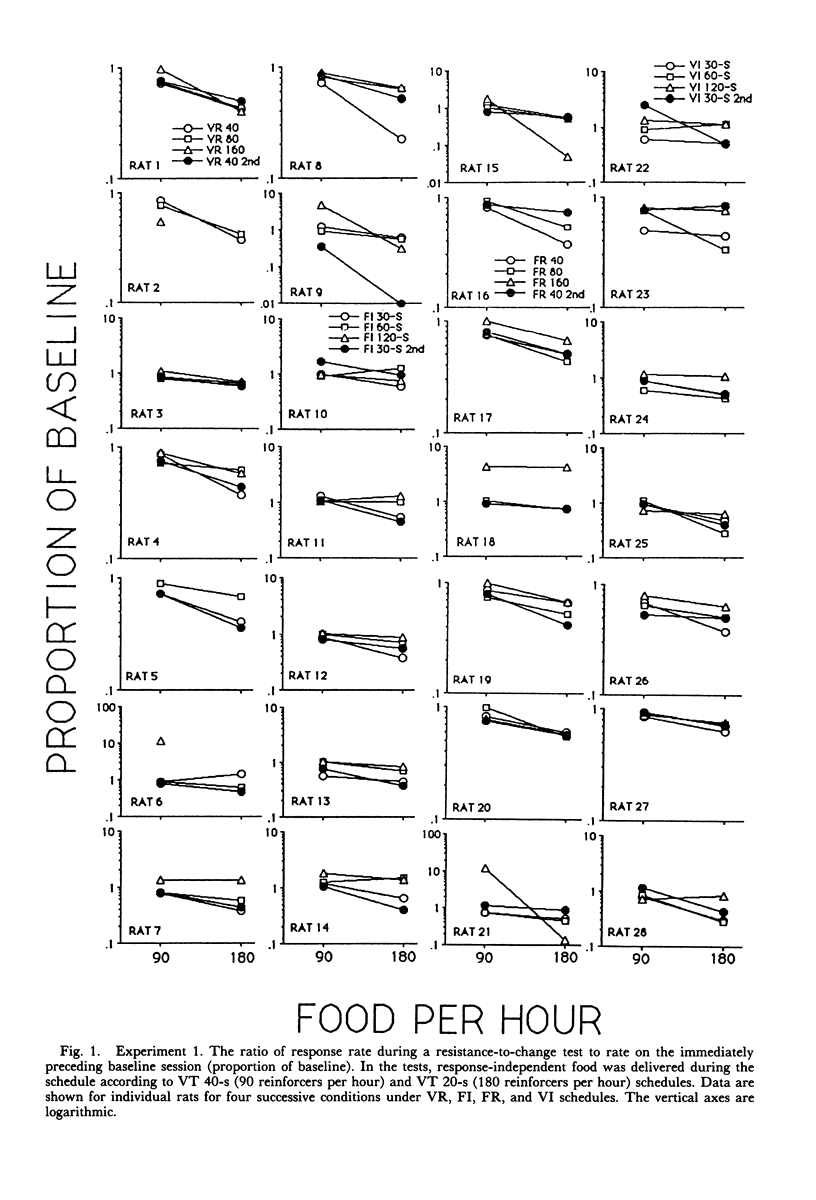
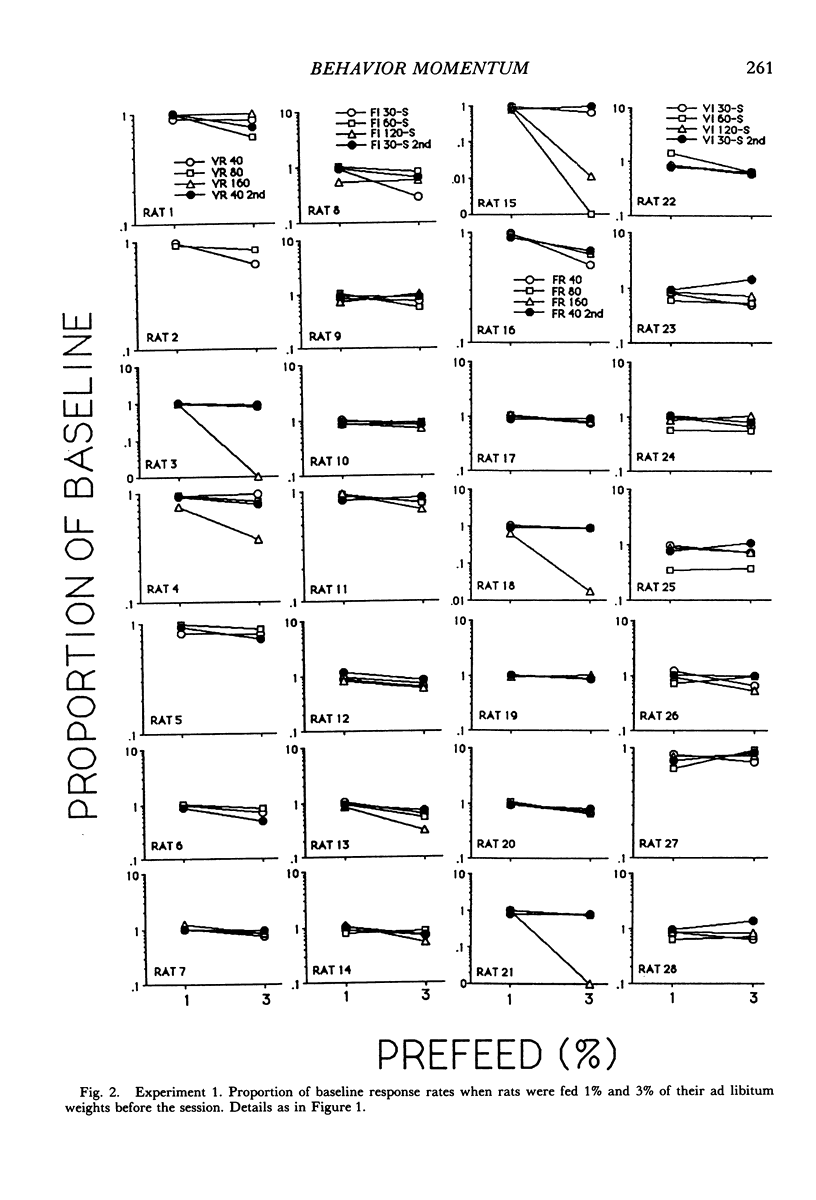
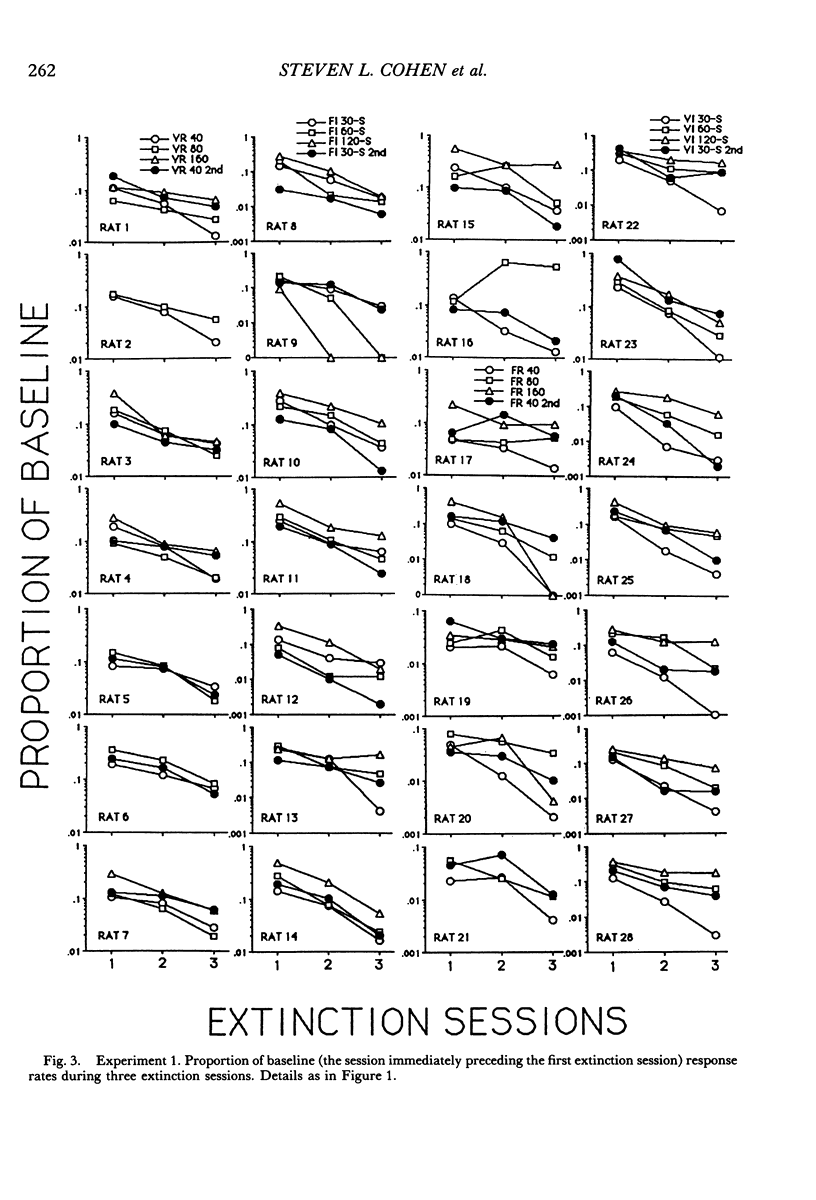
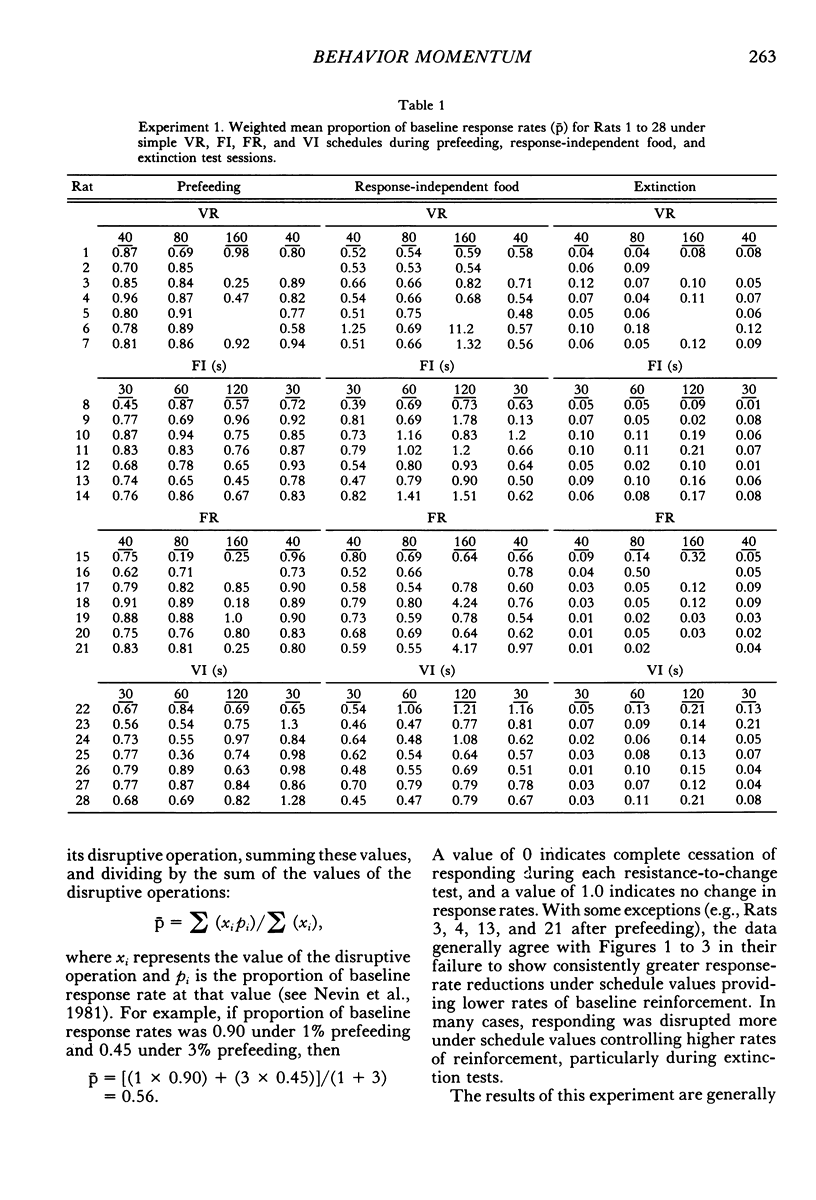
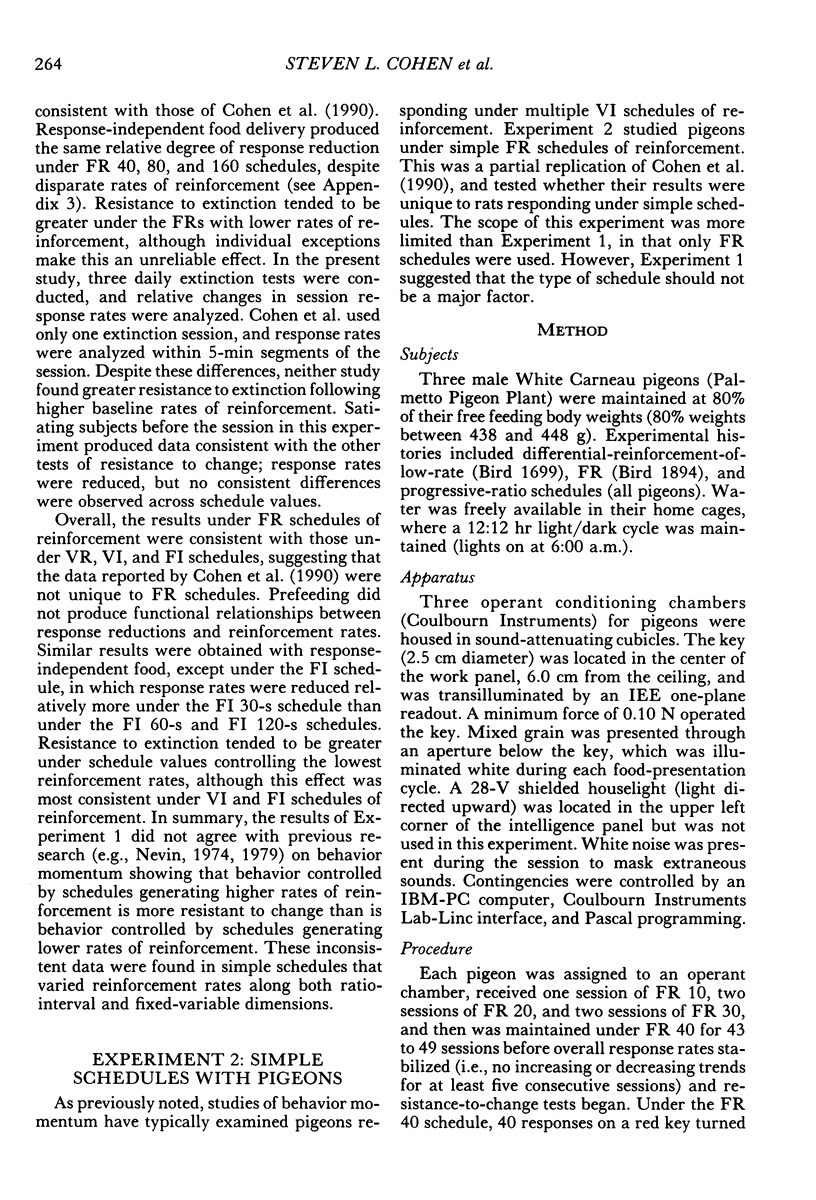
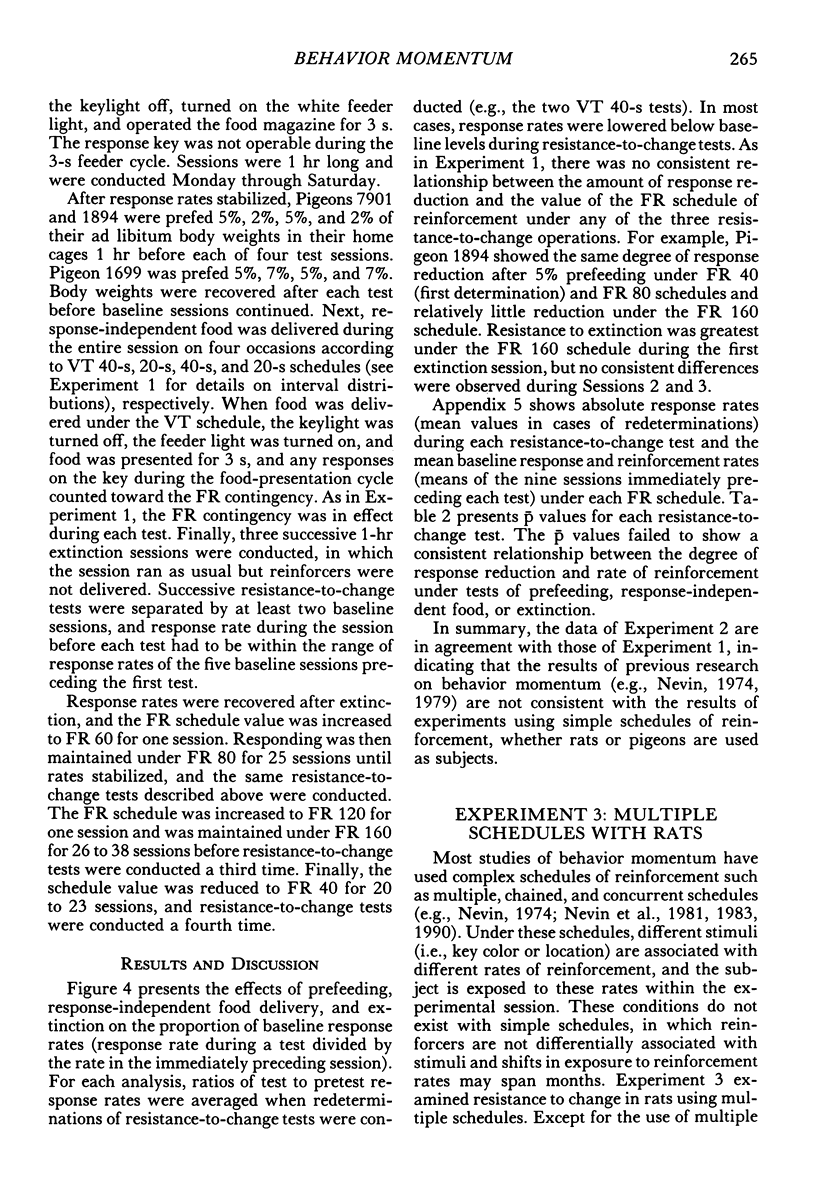
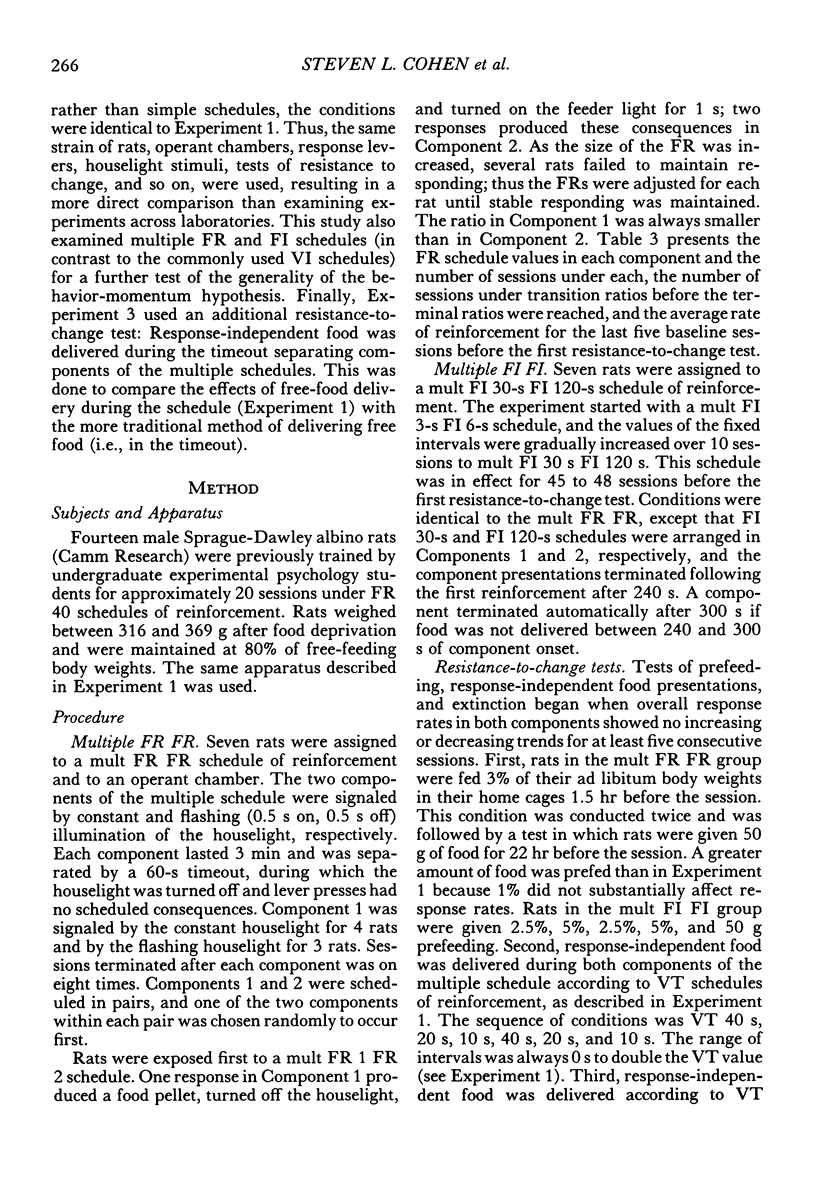

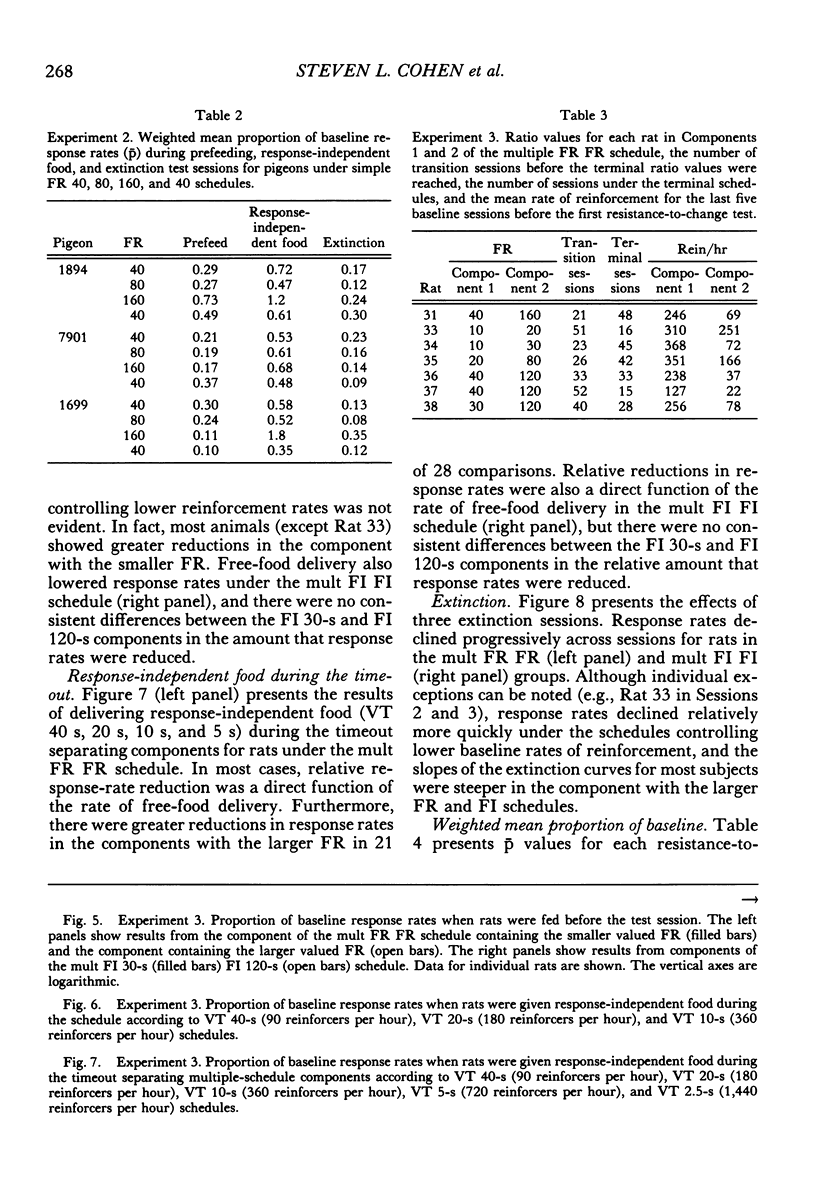
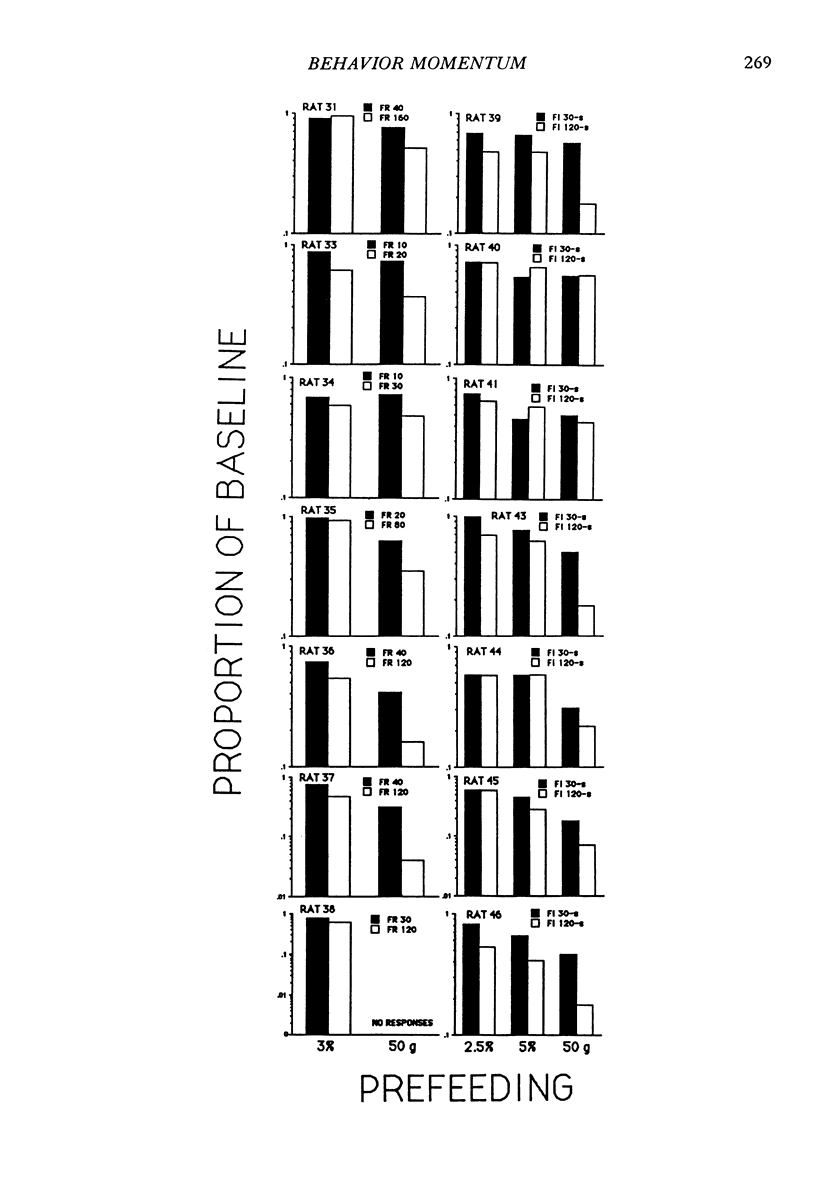
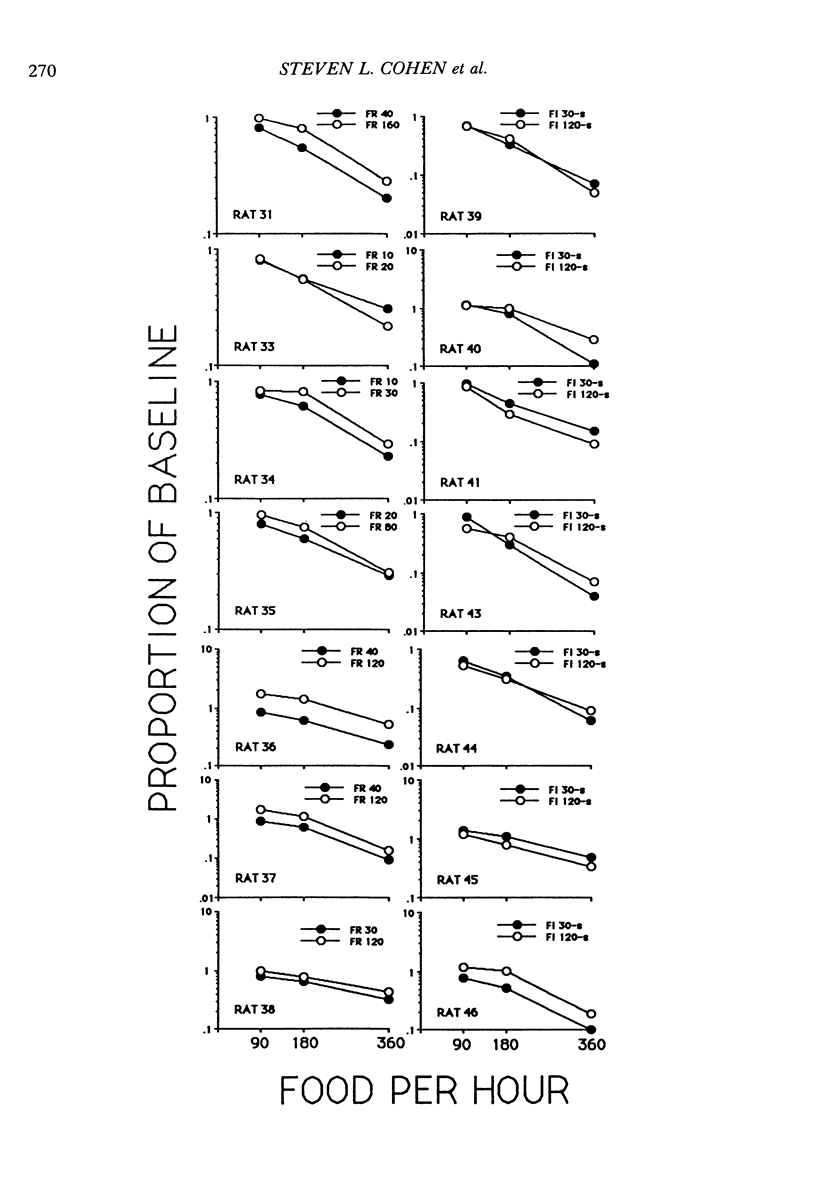
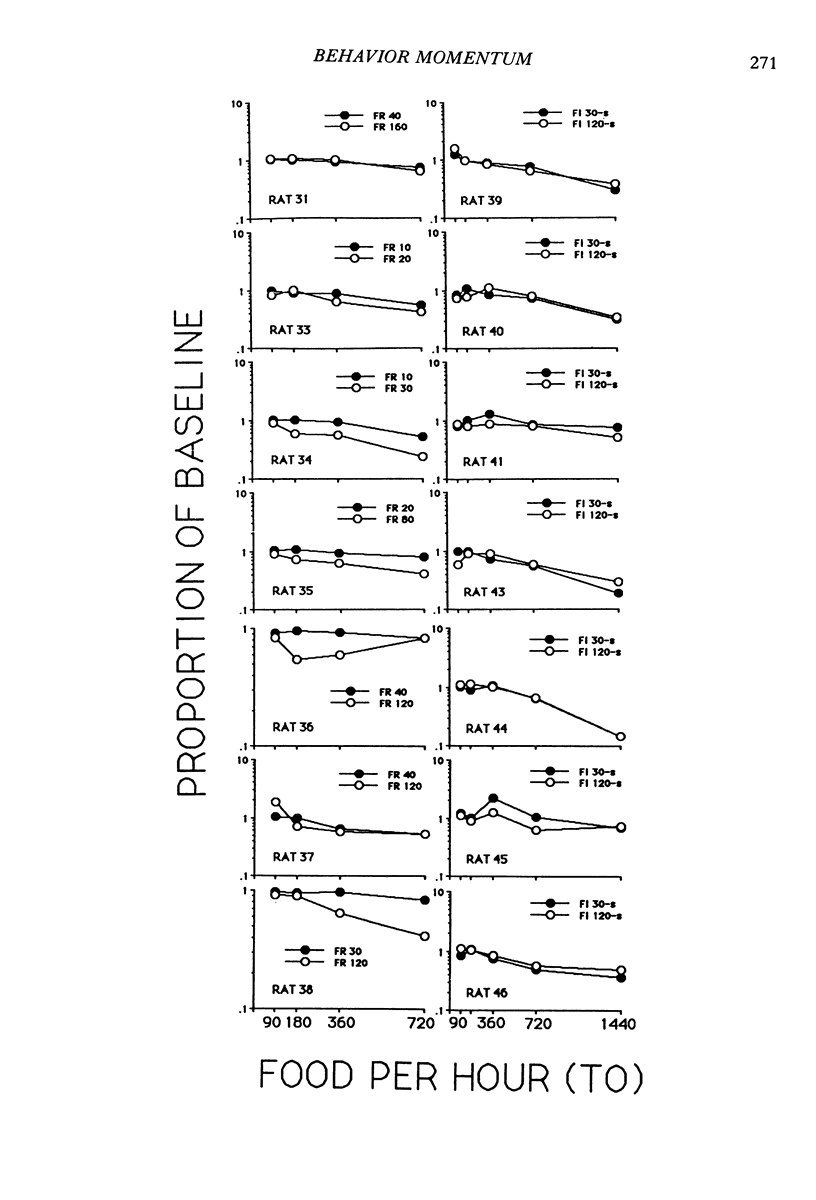
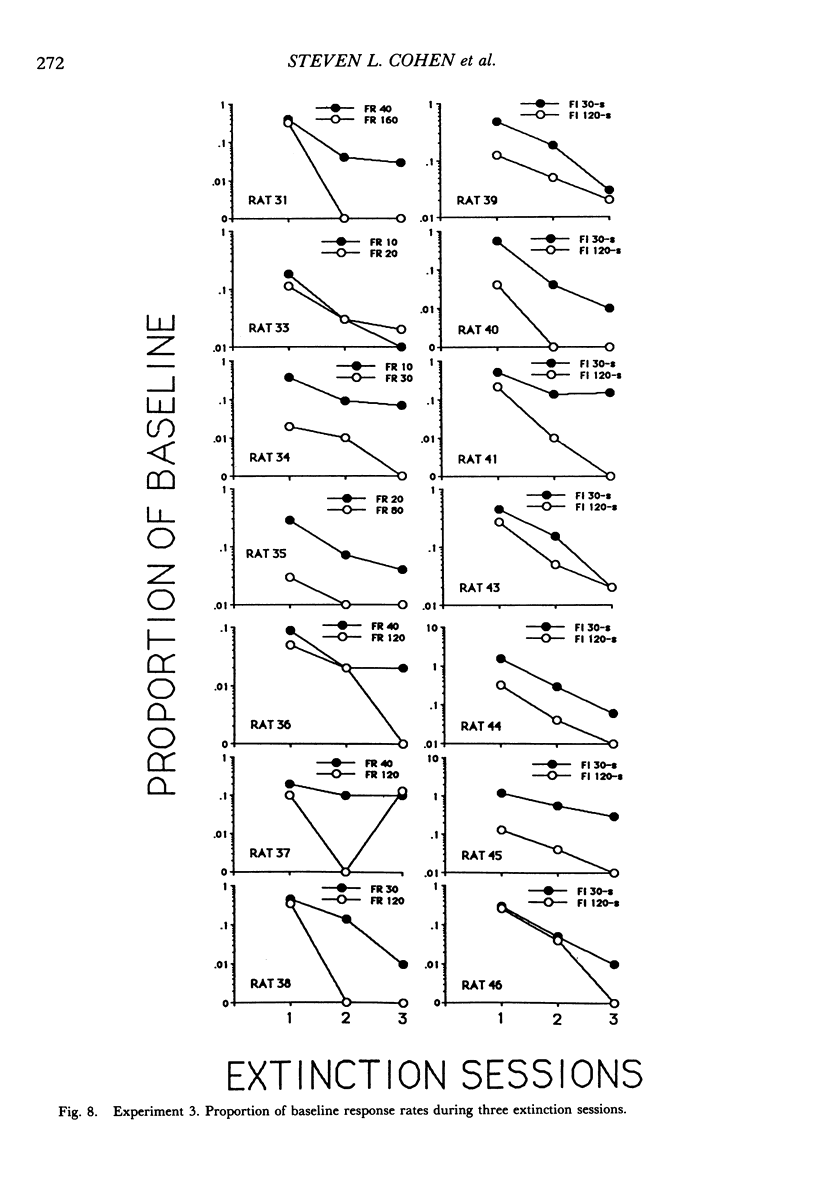
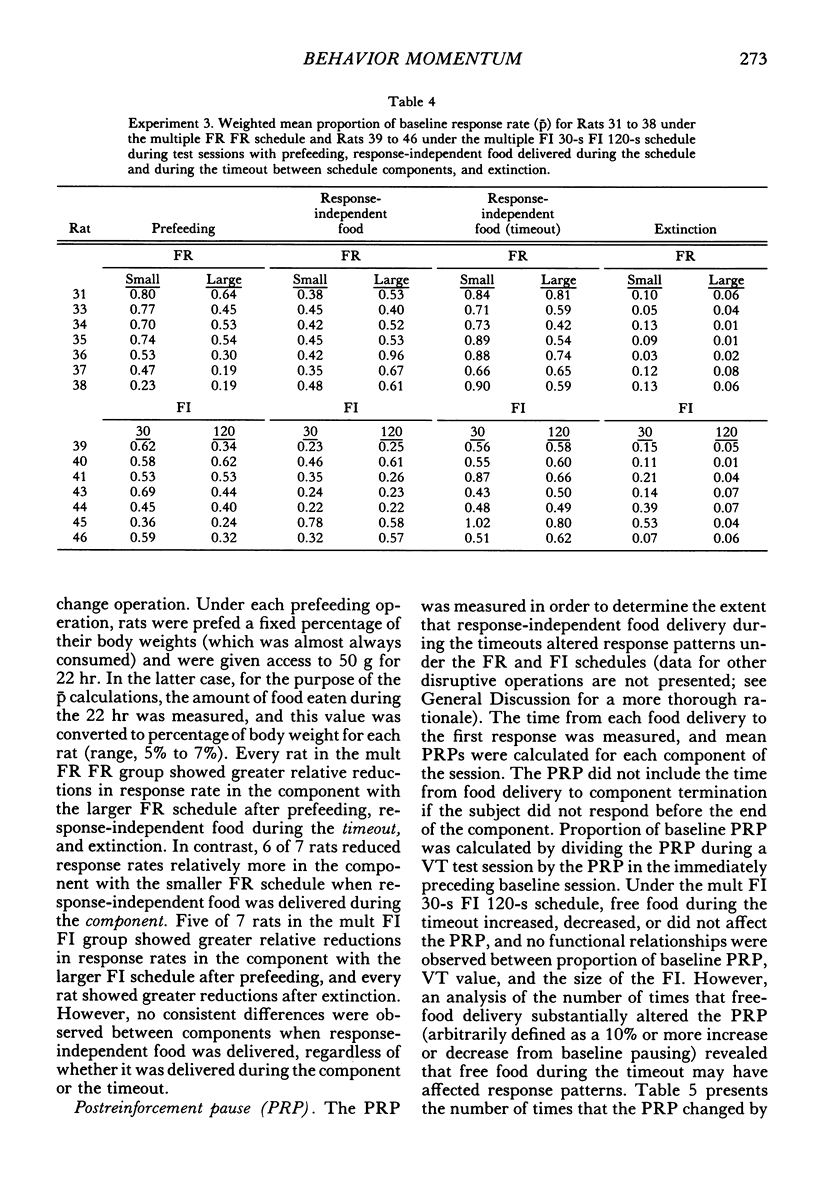
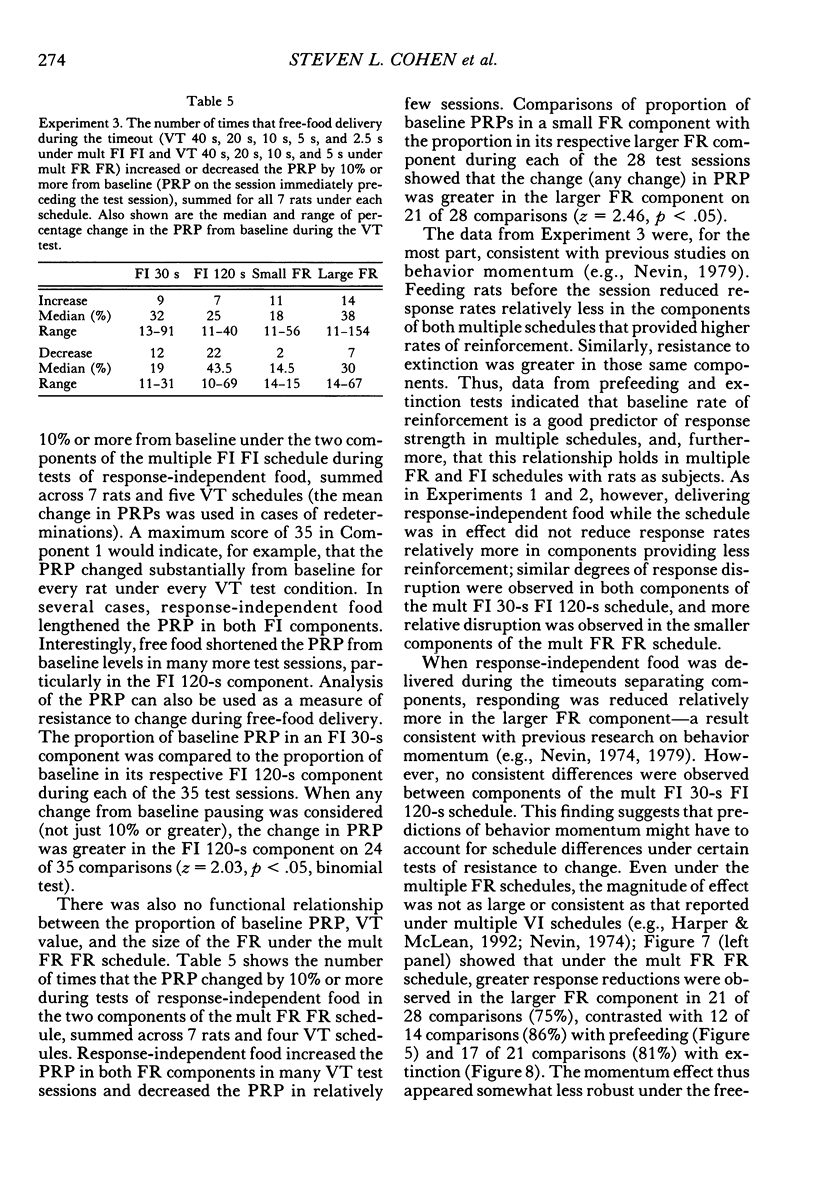
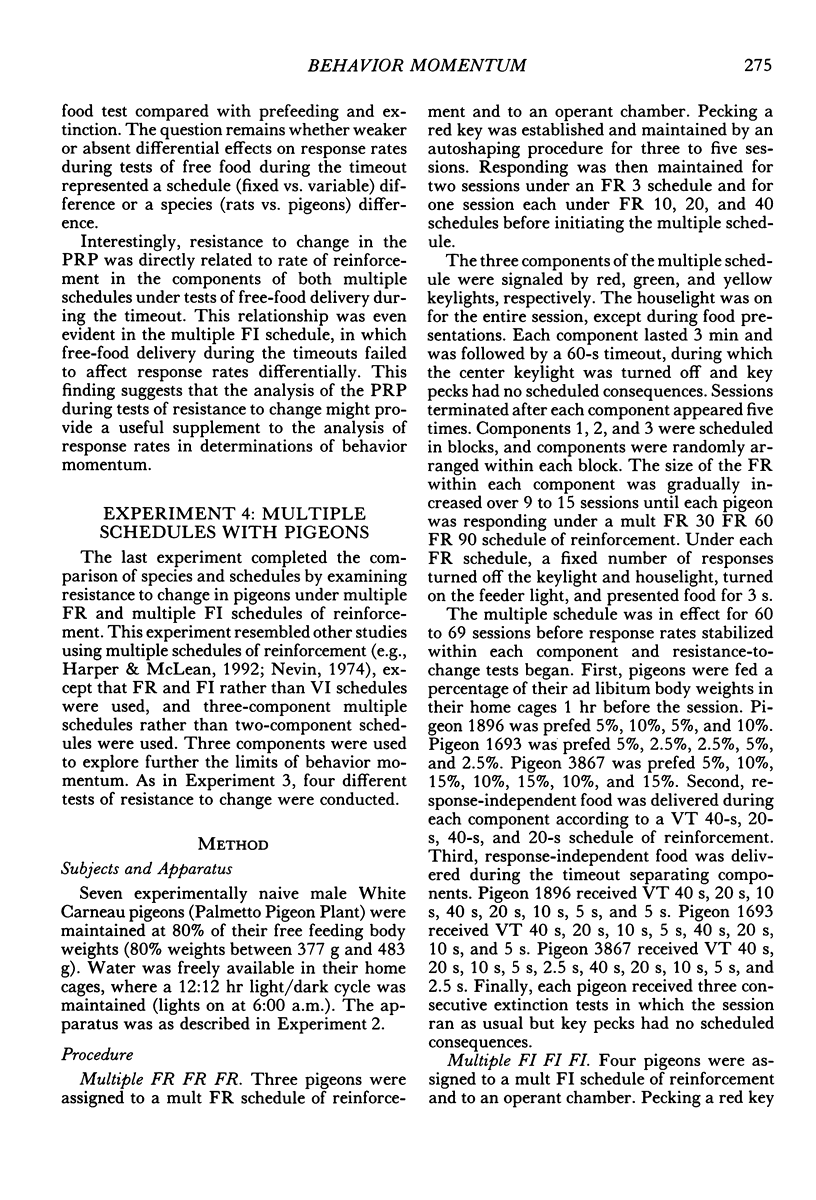

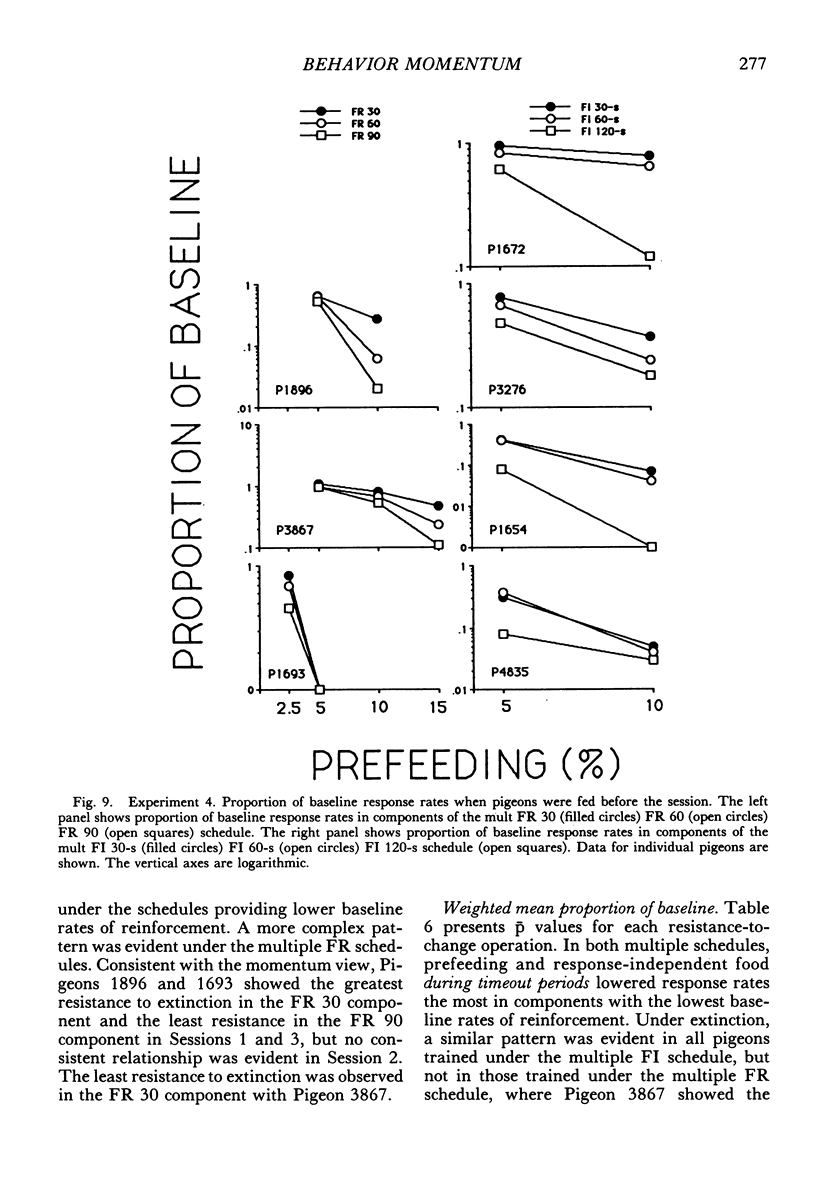
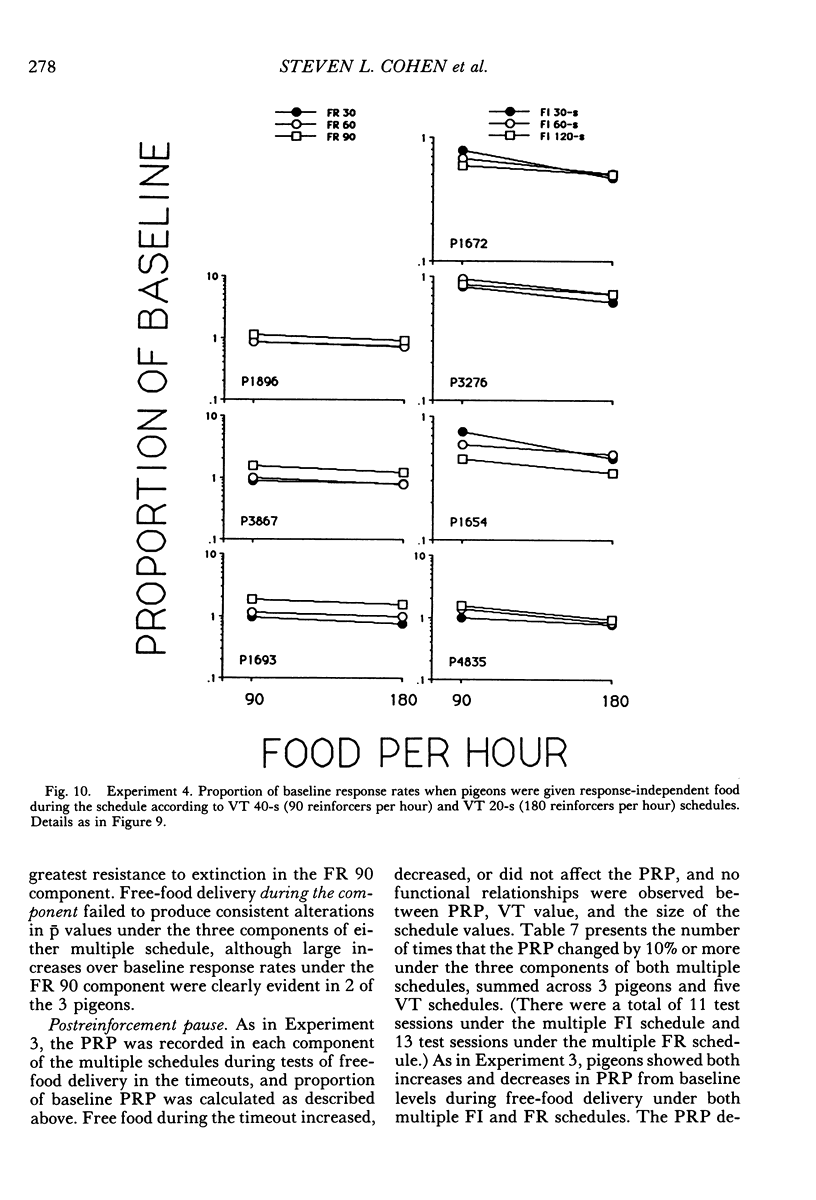
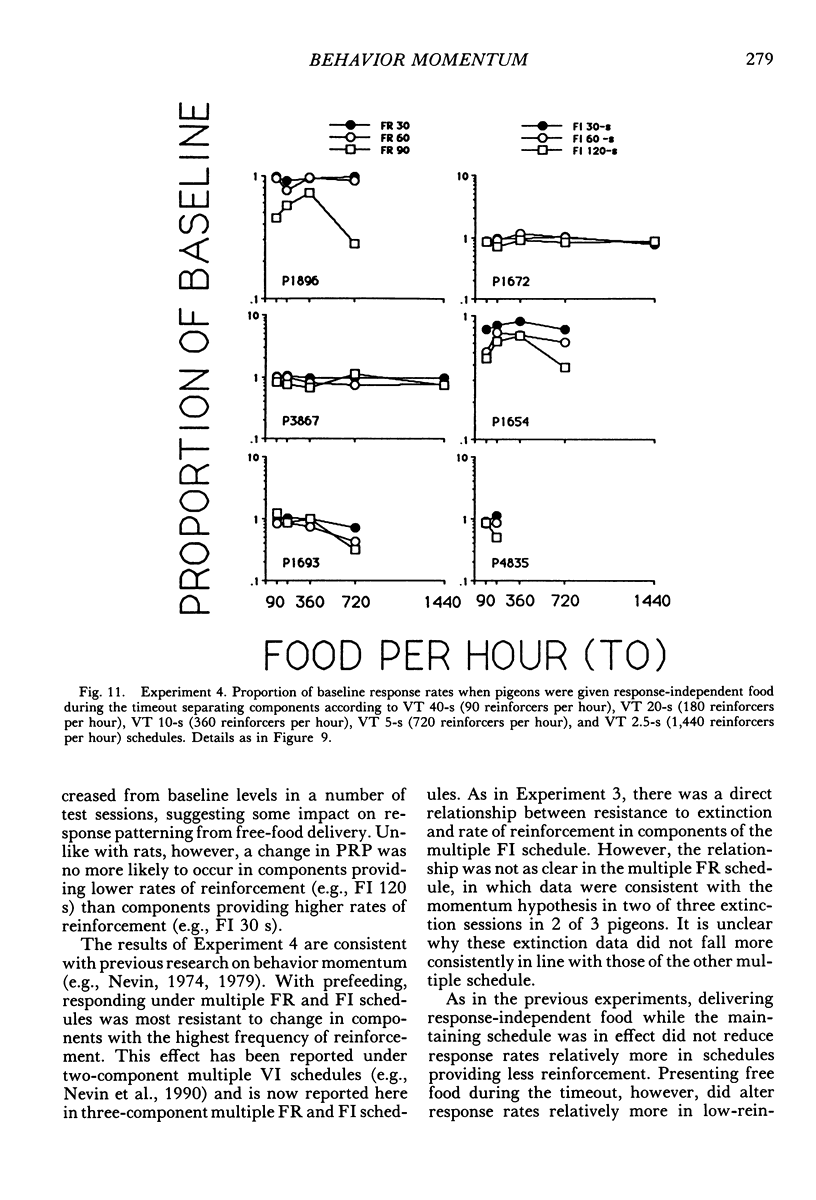
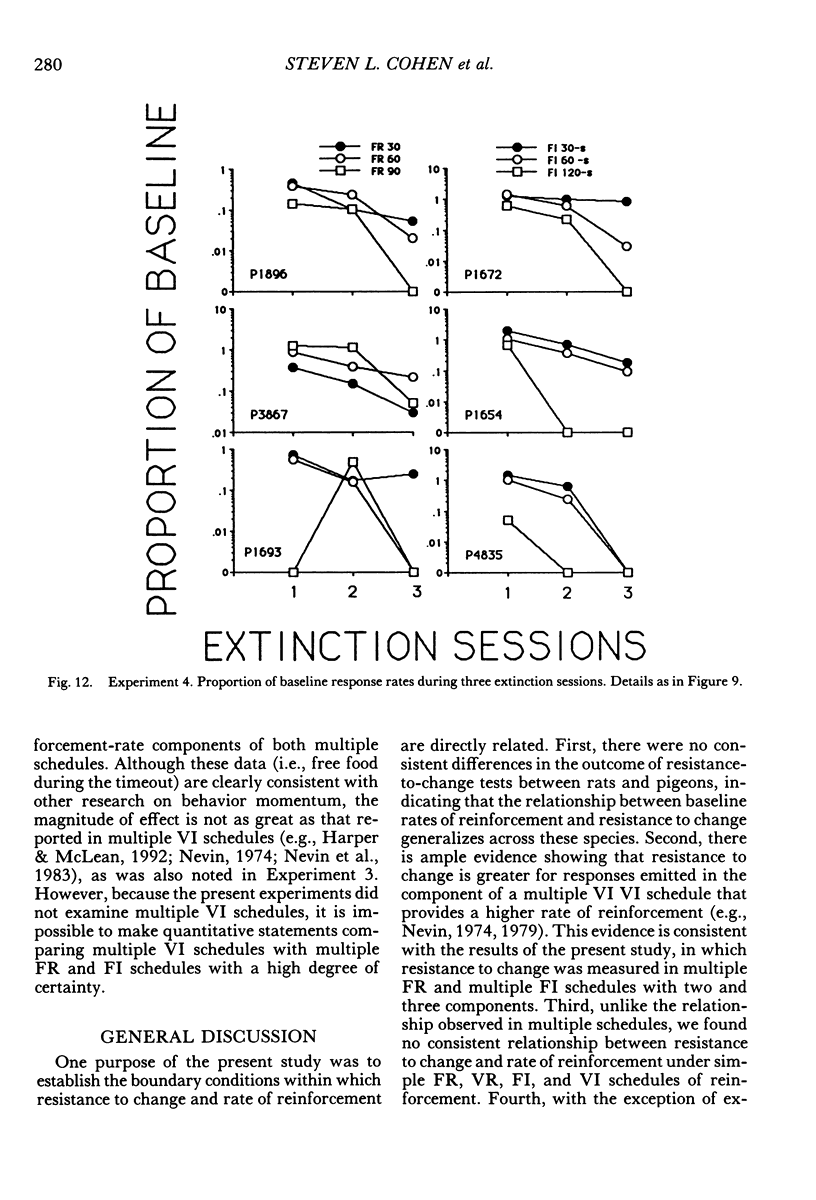
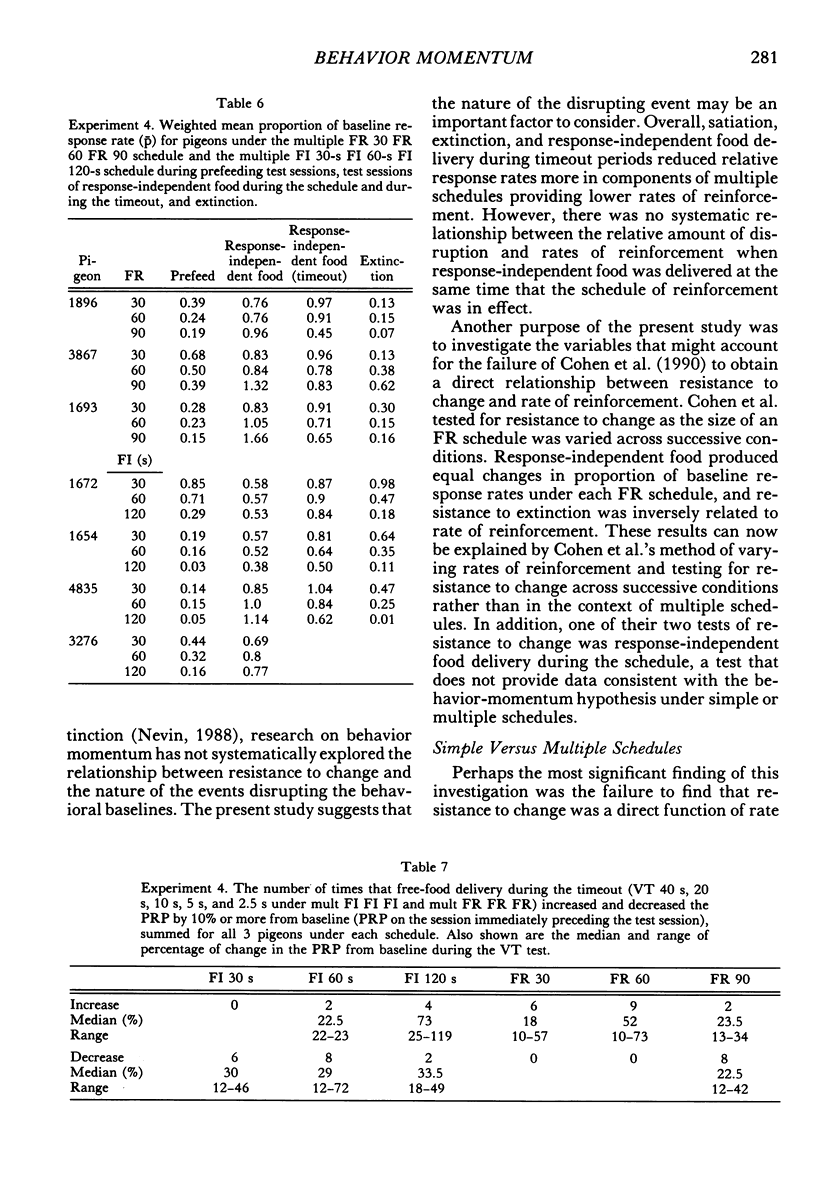
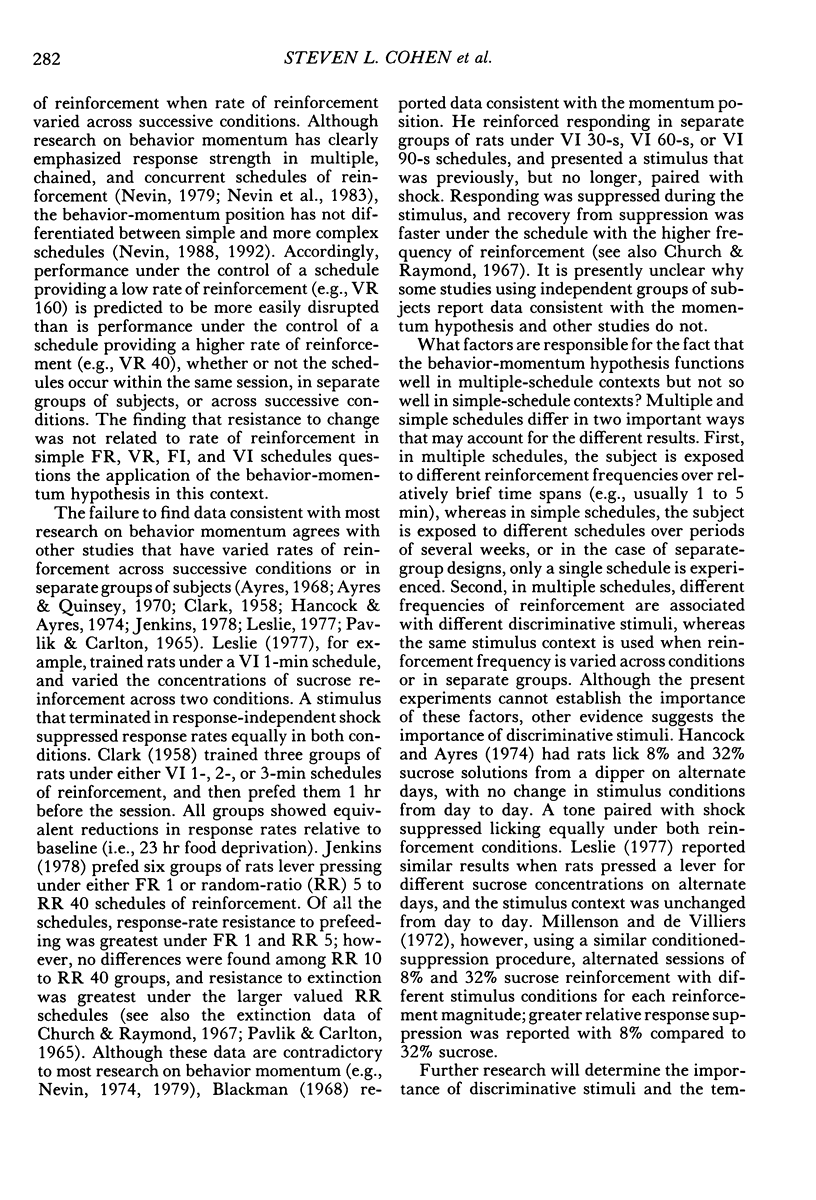
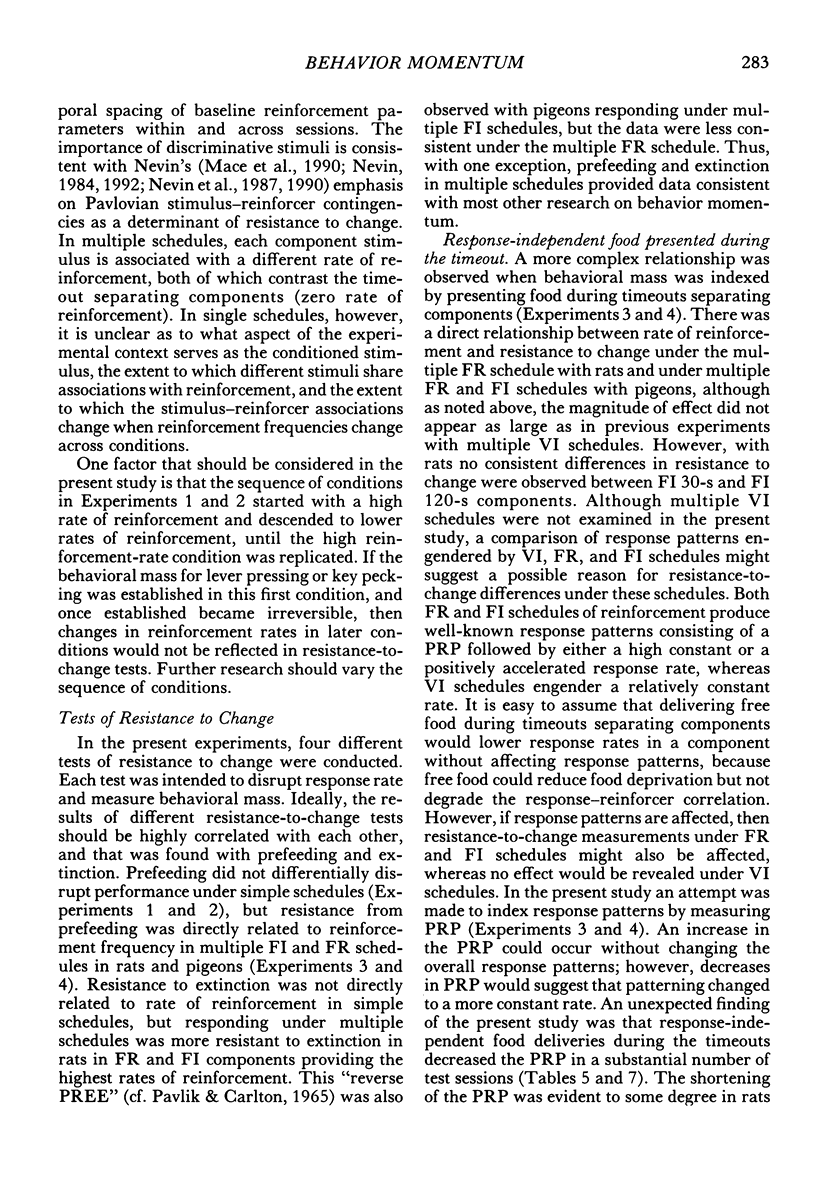
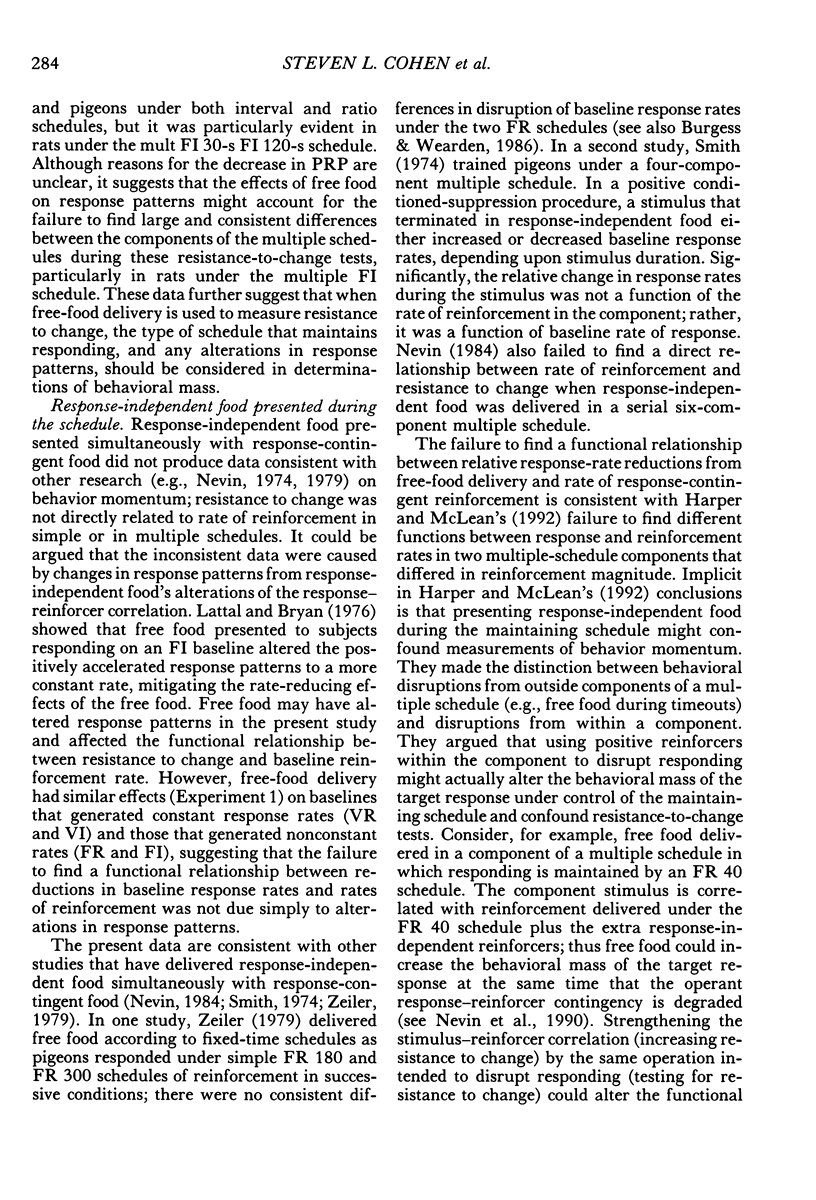
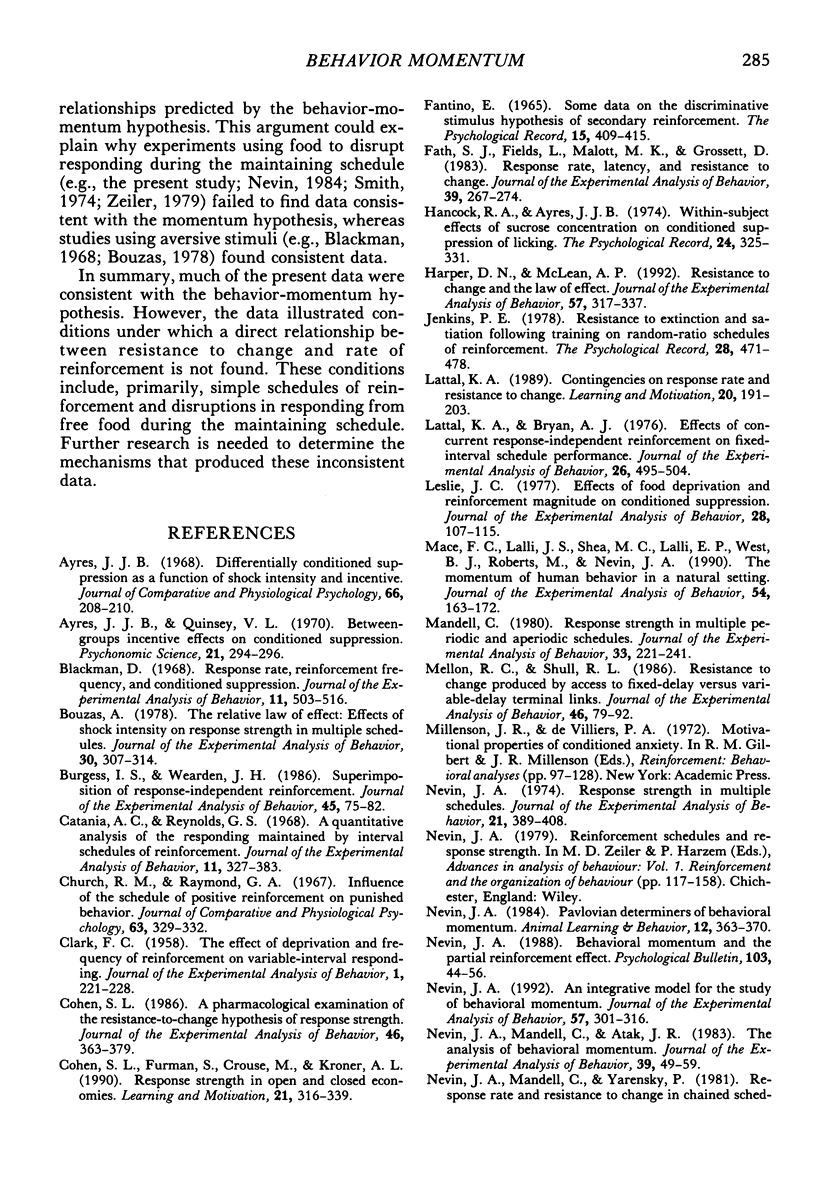
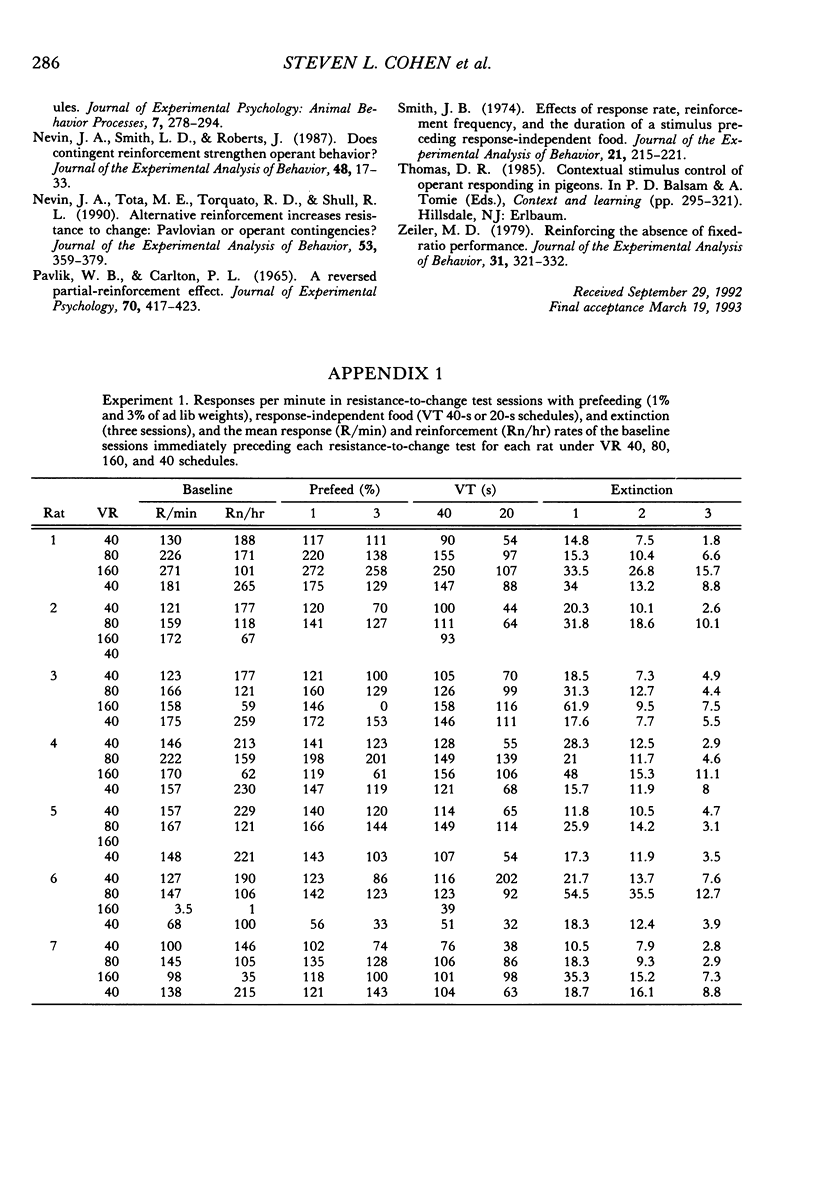
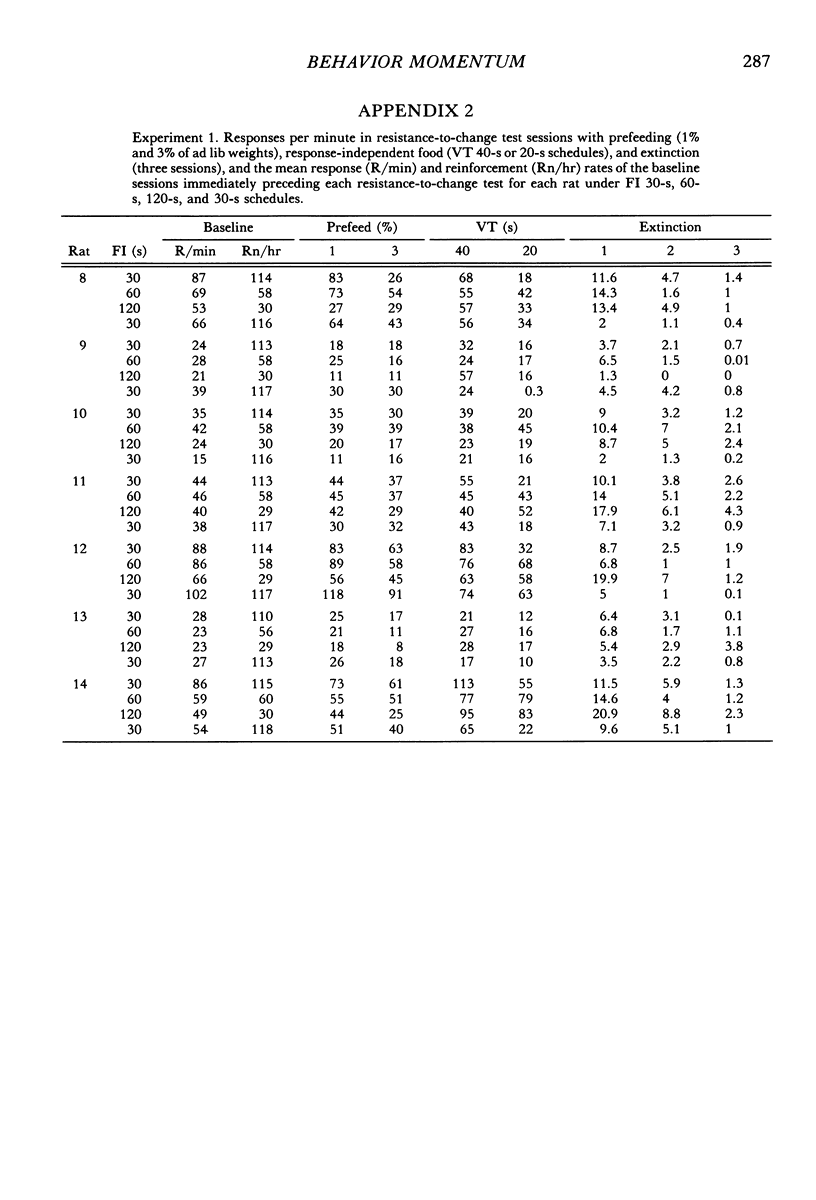
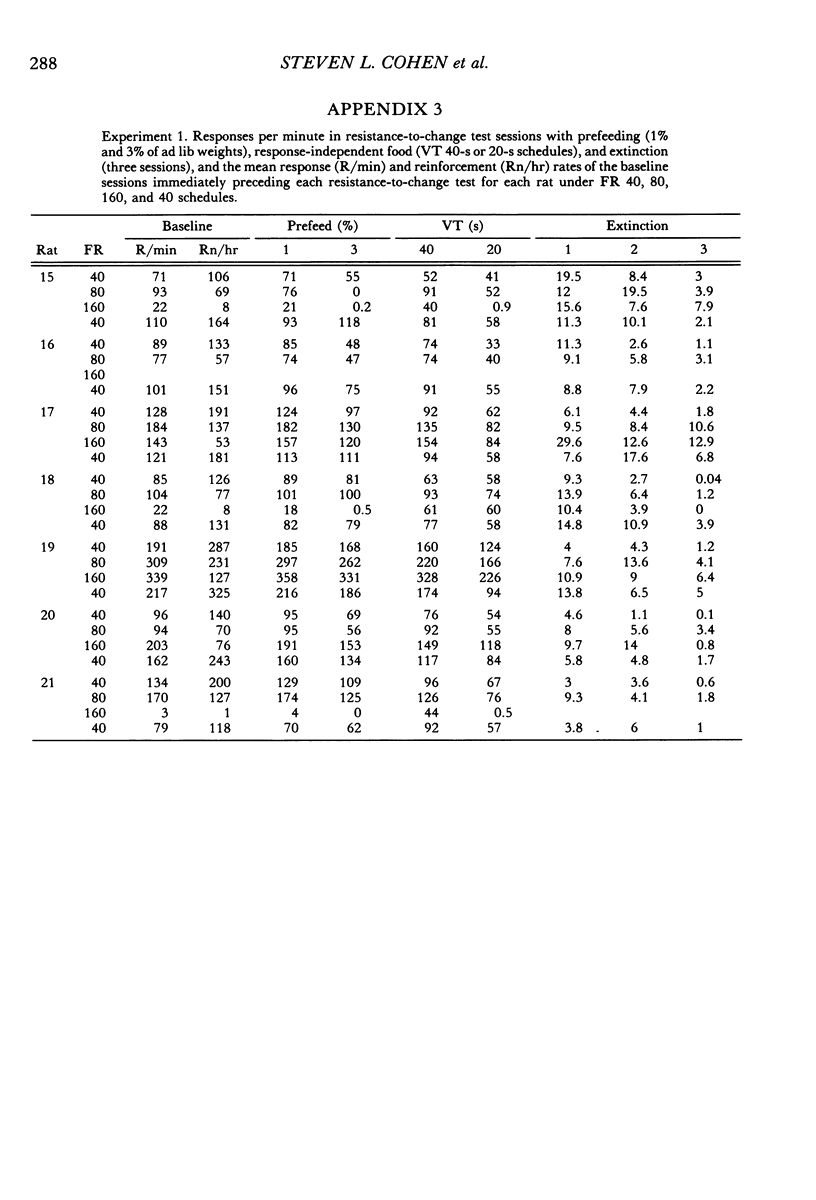
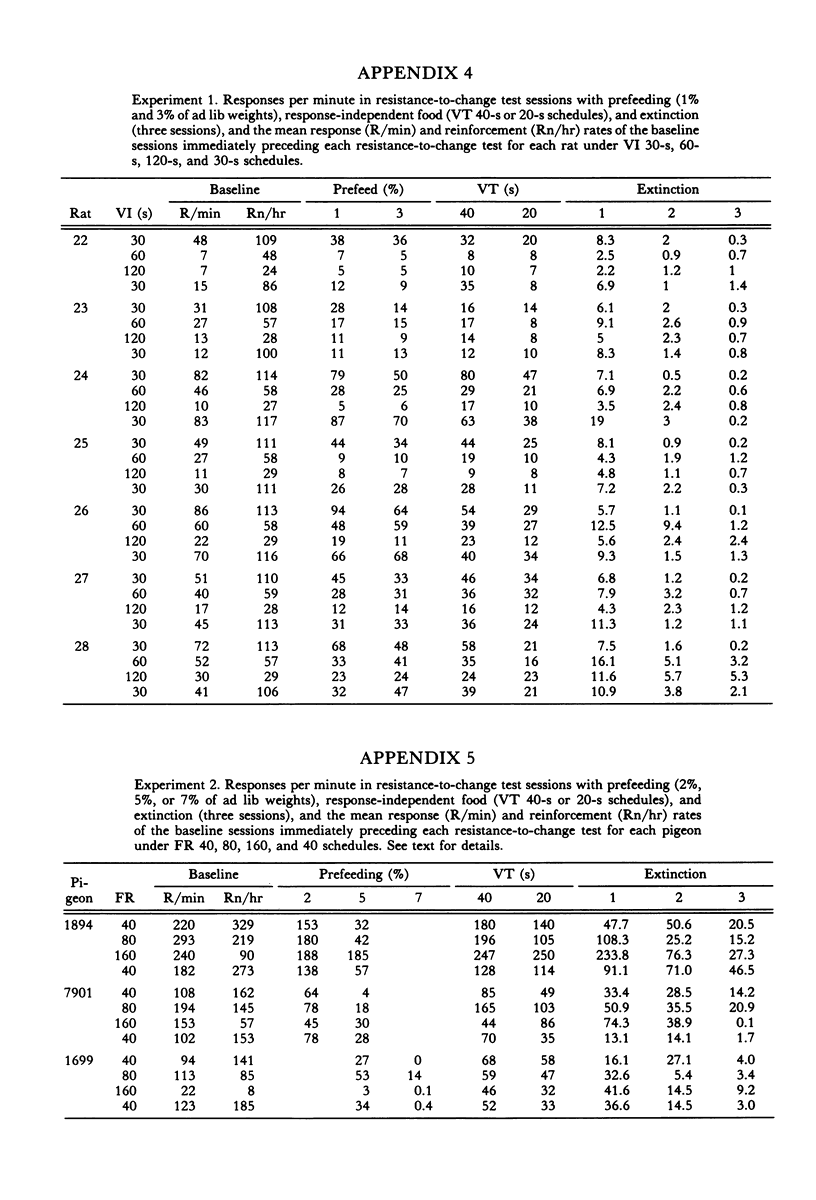
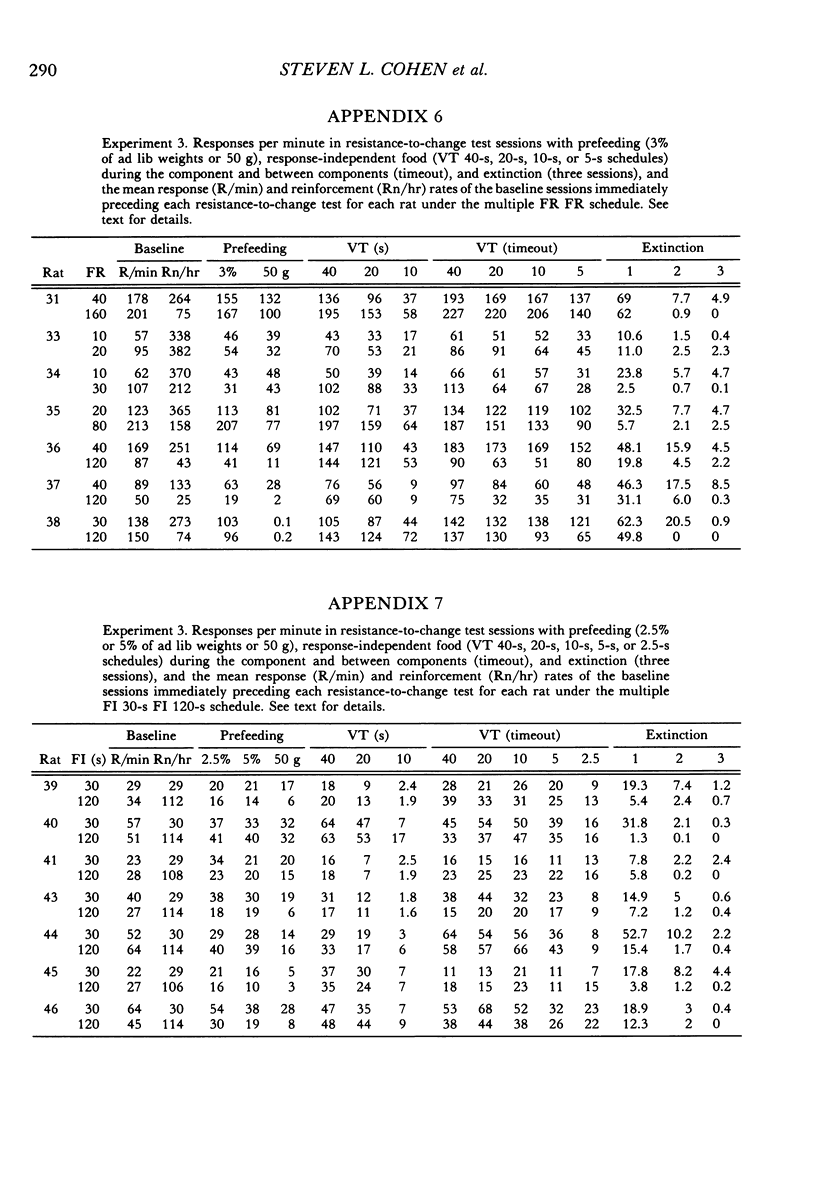
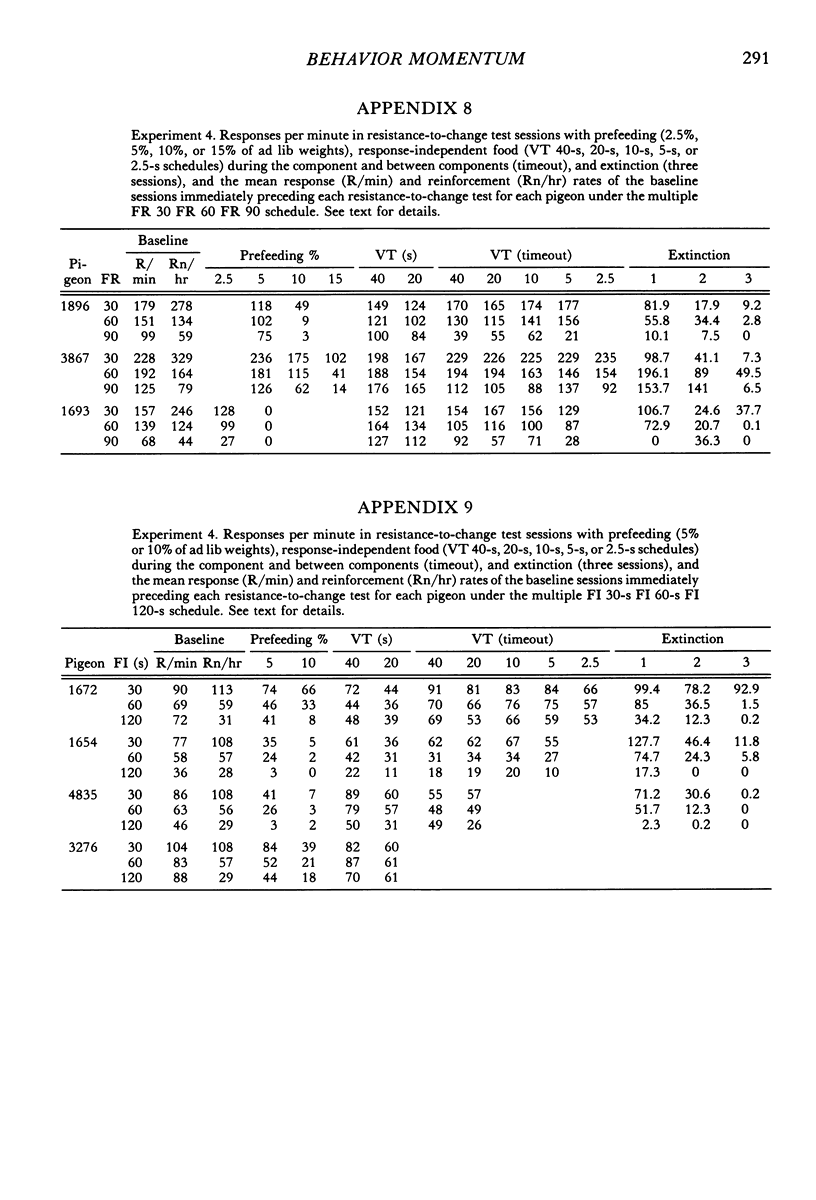
Selected References
These references are in PubMed. This may not be the complete list of references from this article.
- Ayres J. J. Differentially conditioned suppression as a function of shock intensity and incentive. J Comp Physiol Psychol. 1968 Aug;66(1):208–210. doi: 10.1037/h0025971. [DOI] [PubMed] [Google Scholar]
- Blackman D. Response rate, reinforcement frequency, and conditioned suppression. J Exp Anal Behav. 1968 Sep;11(5):503–516. doi: 10.1901/jeab.1968.11-503. [DOI] [PMC free article] [PubMed] [Google Scholar]
- Bouzas A. The relative law of effect: effects of shock intensity on response strength in multiple schedules. J Exp Anal Behav. 1978 Nov;30(3):307–314. doi: 10.1901/jeab.1978.30-307. [DOI] [PMC free article] [PubMed] [Google Scholar]
- Burgess I. S., Wearden J. H. Superimposition of response-independent reinforcement. J Exp Anal Behav. 1986 Jan;45(1):75–82. doi: 10.1901/jeab.1986.45-75. [DOI] [PMC free article] [PubMed] [Google Scholar]
- Catania A. C., Reynolds G. S. A quantitative analysis of the responding maintained by interval schedules of reinforcement. J Exp Anal Behav. 1968 May;11(3 Suppl):327–383. doi: 10.1901/jeab.1968.11-s327. [DOI] [PMC free article] [PubMed] [Google Scholar]
- Church R. M., Raymond G. A. Influence of the schedule of positive reinforcement on punished behavior. J Comp Physiol Psychol. 1967 Apr;63(2):329–332. doi: 10.1037/h0024382. [DOI] [PubMed] [Google Scholar]
- Clark F. C. The effect of deprivation and frequency of reinforcement on variable-interval responding. J Exp Anal Behav. 1958 Aug;1(3):221–228. doi: 10.1901/jeab.1958.1-221. [DOI] [PMC free article] [PubMed] [Google Scholar]
- Cohen S. L. A pharmacological examination of the resistance-to-change hypothesis of response strength. J Exp Anal Behav. 1986 Nov;46(3):363–379. doi: 10.1901/jeab.1986.46-363. [DOI] [PMC free article] [PubMed] [Google Scholar]
- Fath S. J., Fields L., Malott M. K., Grossett D. Response rate, latency, and resistance to change. J Exp Anal Behav. 1983 Mar;39(2):267–274. doi: 10.1901/jeab.1983.39-267. [DOI] [PMC free article] [PubMed] [Google Scholar]
- Harper D. N., McLean A. P. Resistance to change and the law of effect. J Exp Anal Behav. 1992 May;57(3):317–337. doi: 10.1901/jeab.1992.57-317. [DOI] [PMC free article] [PubMed] [Google Scholar]
- Lattal K. A., Bryan A. J. Effects of concurrent response-independent reinforcement on fixed-interval schedule performance. J Exp Anal Behav. 1976 Nov;26(3):495–504. doi: 10.1901/jeab.1976.26-495. [DOI] [PMC free article] [PubMed] [Google Scholar]
- Leslie J. C. Effects of food deprivation and reinforcement magnitude on conditioned suppression. J Exp Anal Behav. 1977 Sep;28(2):107–115. doi: 10.1901/jeab.1977.28-107. [DOI] [PMC free article] [PubMed] [Google Scholar]
- Mace F. C., Lalli J. S., Shea M. C., Lalli E. P., West B. J., Roberts M., Nevin J. A. The momentum of human behavior in a natural setting. J Exp Anal Behav. 1990 Nov;54(3):163–172. doi: 10.1901/jeab.1990.54-163. [DOI] [PMC free article] [PubMed] [Google Scholar]
- Mandell C. Response strength in multiple periodic and aperiodic schedules. J Exp Anal Behav. 1980 Mar;33(2):221–241. doi: 10.1901/jeab.1980.33-221. [DOI] [PMC free article] [PubMed] [Google Scholar]
- Mellon R. C., Shull R. L. Resistance to change produced by access to fixed-delay versus variable-delay terminal links. J Exp Anal Behav. 1986 Jul;46(1):79–92. doi: 10.1901/jeab.1986.46-79. [DOI] [PMC free article] [PubMed] [Google Scholar]
- Nevin J. A. An integrative model for the study of behavioral momentum. J Exp Anal Behav. 1992 May;57(3):301–316. doi: 10.1901/jeab.1992.57-301. [DOI] [PMC free article] [PubMed] [Google Scholar]
- Nevin J. A., Mandell C., Atak J. R. The analysis of behavioral momentum. J Exp Anal Behav. 1983 Jan;39(1):49–59. doi: 10.1901/jeab.1983.39-49. [DOI] [PMC free article] [PubMed] [Google Scholar]
- Nevin J. A. Response strength in multiple schedules. J Exp Anal Behav. 1974 May;21(3):389–408. doi: 10.1901/jeab.1974.21-389. [DOI] [PMC free article] [PubMed] [Google Scholar]
- Nevin J. A., Smith L. D., Roberts J. Does contingent reinforcement strengthen operant behavior? J Exp Anal Behav. 1987 Jul;48(1):17–33. doi: 10.1901/jeab.1987.48-17. [DOI] [PMC free article] [PubMed] [Google Scholar]
- Nevin J. A., Tota M. E., Torquato R. D., Shull R. L. Alternative reinforcement increases resistance to change: Pavlovian or operant contingencies? J Exp Anal Behav. 1990 May;53(3):359–379. doi: 10.1901/jeab.1990.53-359. [DOI] [PMC free article] [PubMed] [Google Scholar]
- Pavlik W. B., Carlton P. L. A reversed partial-reinforcement effect. J Exp Psychol. 1965 Oct;70(4):417–423. doi: 10.1037/h0022364. [DOI] [PubMed] [Google Scholar]
- Smith J. B. Effects of response rate, reinforcement frequency, and the duration of a stimulus preceding response-independent food. J Exp Anal Behav. 1974 Mar;21(2):215–221. doi: 10.1901/jeab.1974.21-215. [DOI] [PMC free article] [PubMed] [Google Scholar]
- Zeiler M. D. Reinforcing the absence of fixed-ratio performance. J Exp Anal Behav. 1979 May;31(3):321–332. doi: 10.1901/jeab.1979.31-321. [DOI] [PMC free article] [PubMed] [Google Scholar]


